Forums
- Forums
- Axis And Allies Forum
- General Discussion
- Aviation News
Aviation News
Post a reply
- Go to Next topic
- Go to Welcome
- Go to Introduce Yourself
- Go to General Discussion
- Go to Screenshots, Images and Videos
- Go to Off topic
- Go to Works in Progress
- Go to Skinning Tips / Tutorials
- Go to Skin Requests
- Go to IJAAF Library
- Go to Luftwaffe Library
- Go to RAF Library
- Go to USAAF / USN Library
- Go to Misc Library
- Go to The Ops Room
- Go to Made in Germany
- Go to Campaigns and Missions
- Go to Works in Progress
- Go to Juri's Air-Raid Shelter
- Go to Campaigns and Missions
- Go to Works in Progress
- Go to Skinpacks
- Go to External Projects Discussion
- Go to Books & Resources
-
 Main AdminNEWPORT NEWS, Va. (April 8, 2017)
Main AdminNEWPORT NEWS, Va. (April 8, 2017)
The future USS Gerald R. Ford (CVN 78) underway on its own power for the first time. The first-of-class ship -- the first new U.S. aircraft carrier design in 40 years -- will spend several days conducting builder's sea trials, a comprehensive test of many of the ship's key systems and technologies. U.S. Navy photo by Mass Communication Specialist 2nd Class Ridge Leoni (Released)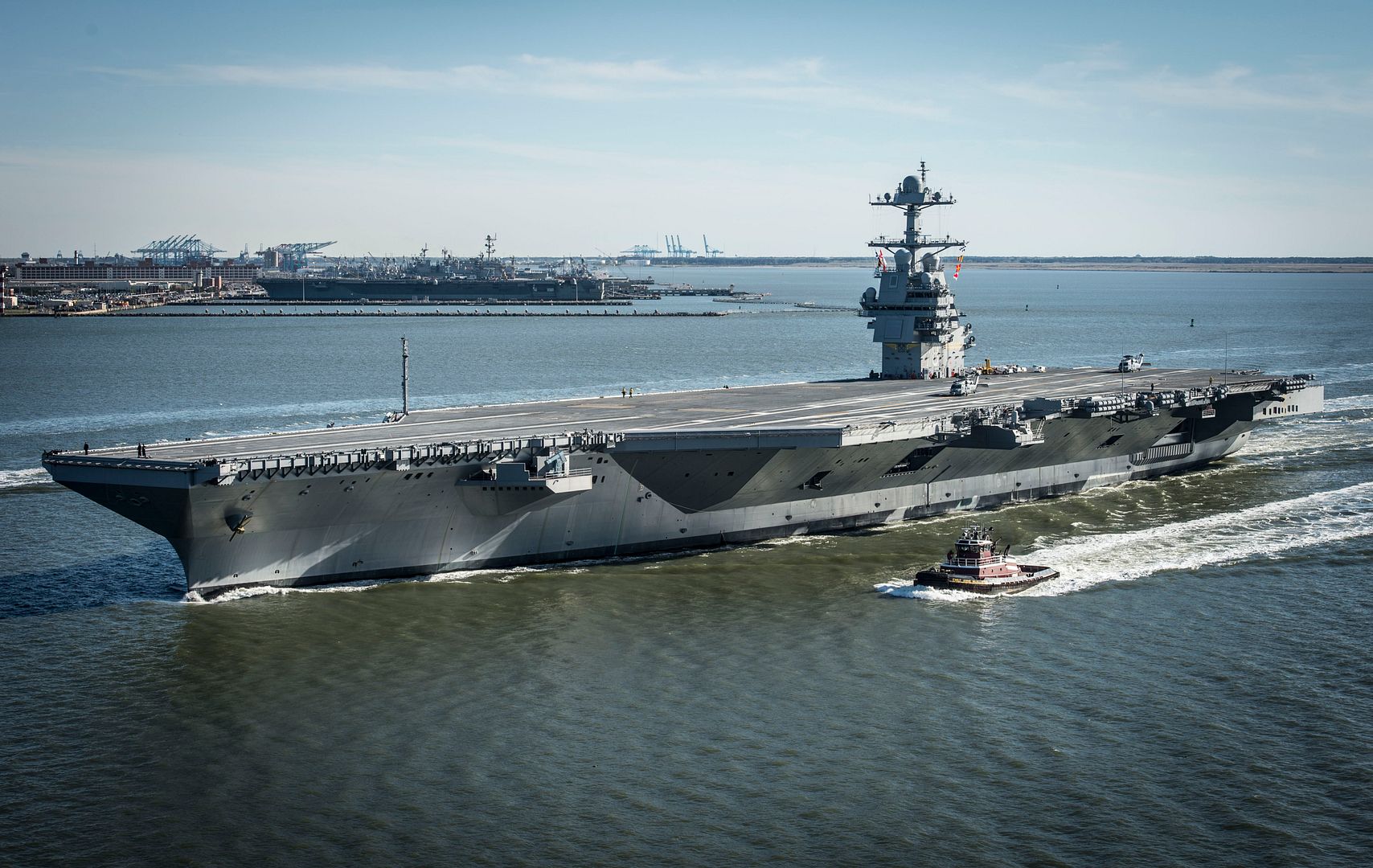
NEWPORT NEWS, Va. (April 8, 2017) - Pre-Commissioning Unit Gerald R. Ford (CVN 78) departs Huntington Ingalls Industries Newport News Shipbuilding for builder?s sea trials off the coast. The first- of-class ship?the first new U.S. aircraft carrier design in 40 years?will spend several days conducting builder?s sea trials, a comprehensive test of many of the ship?s key systems and technologies. (U.S. Navy photo's by Chief Mass Communication Specialist Christopher Delano)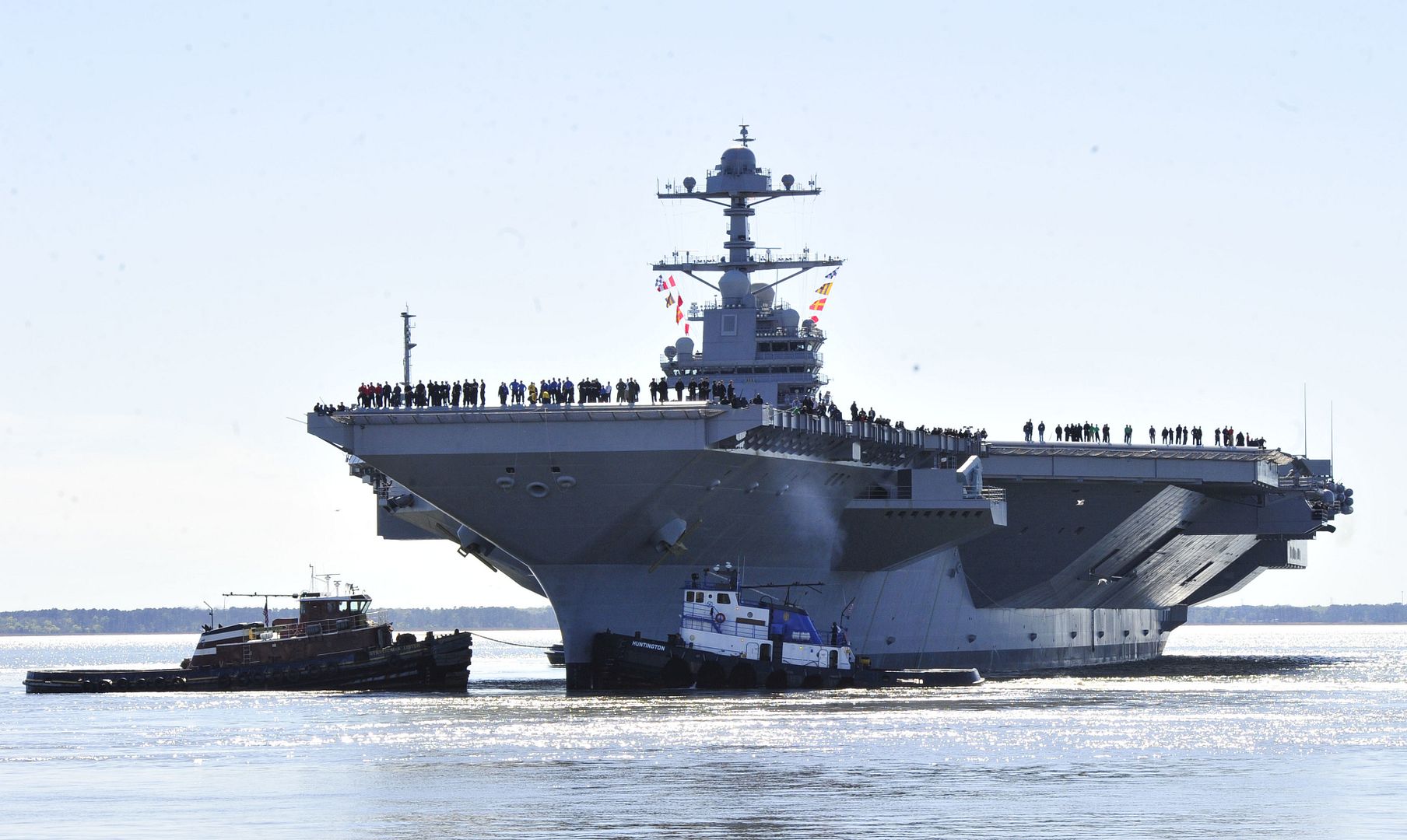
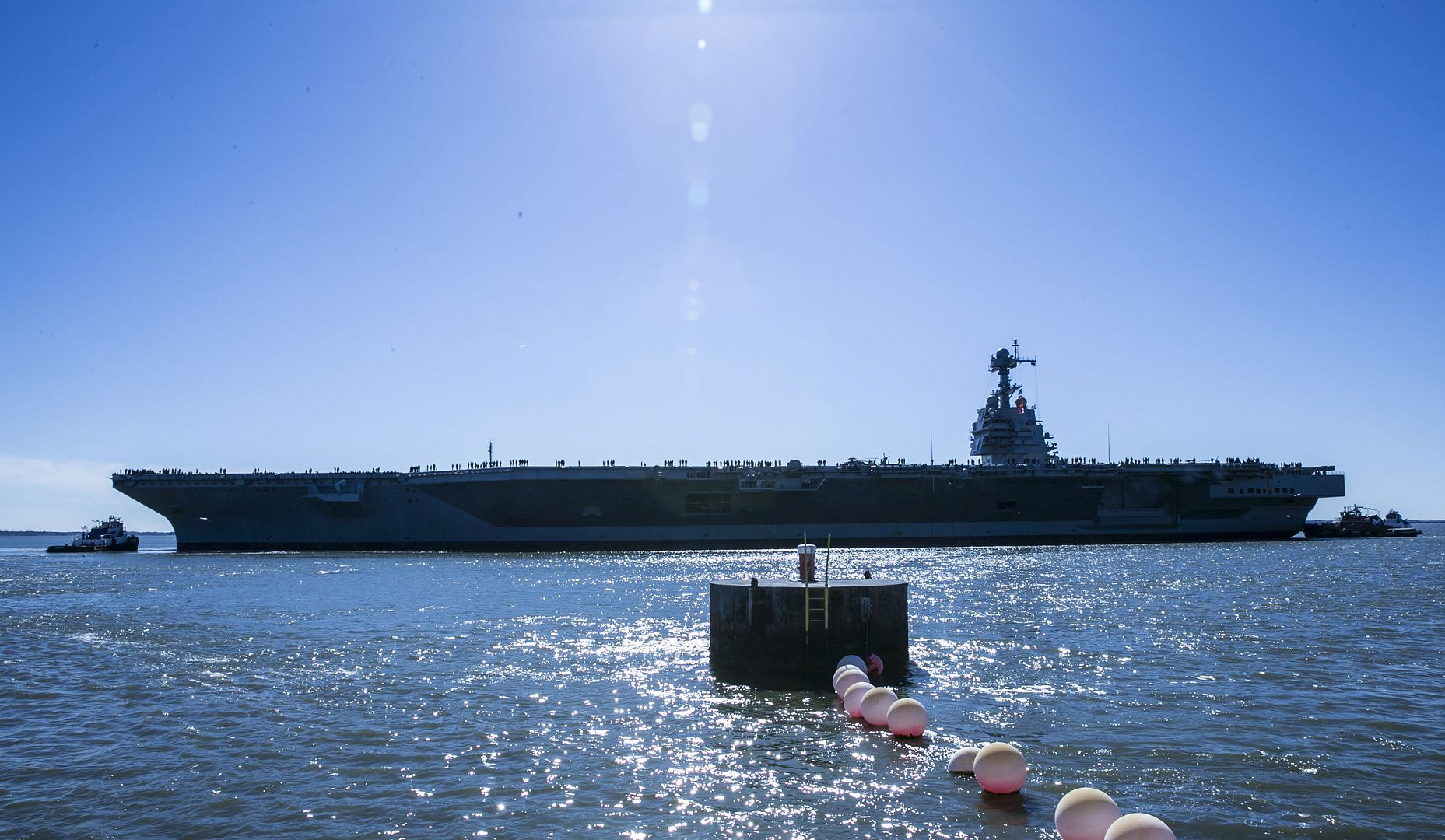
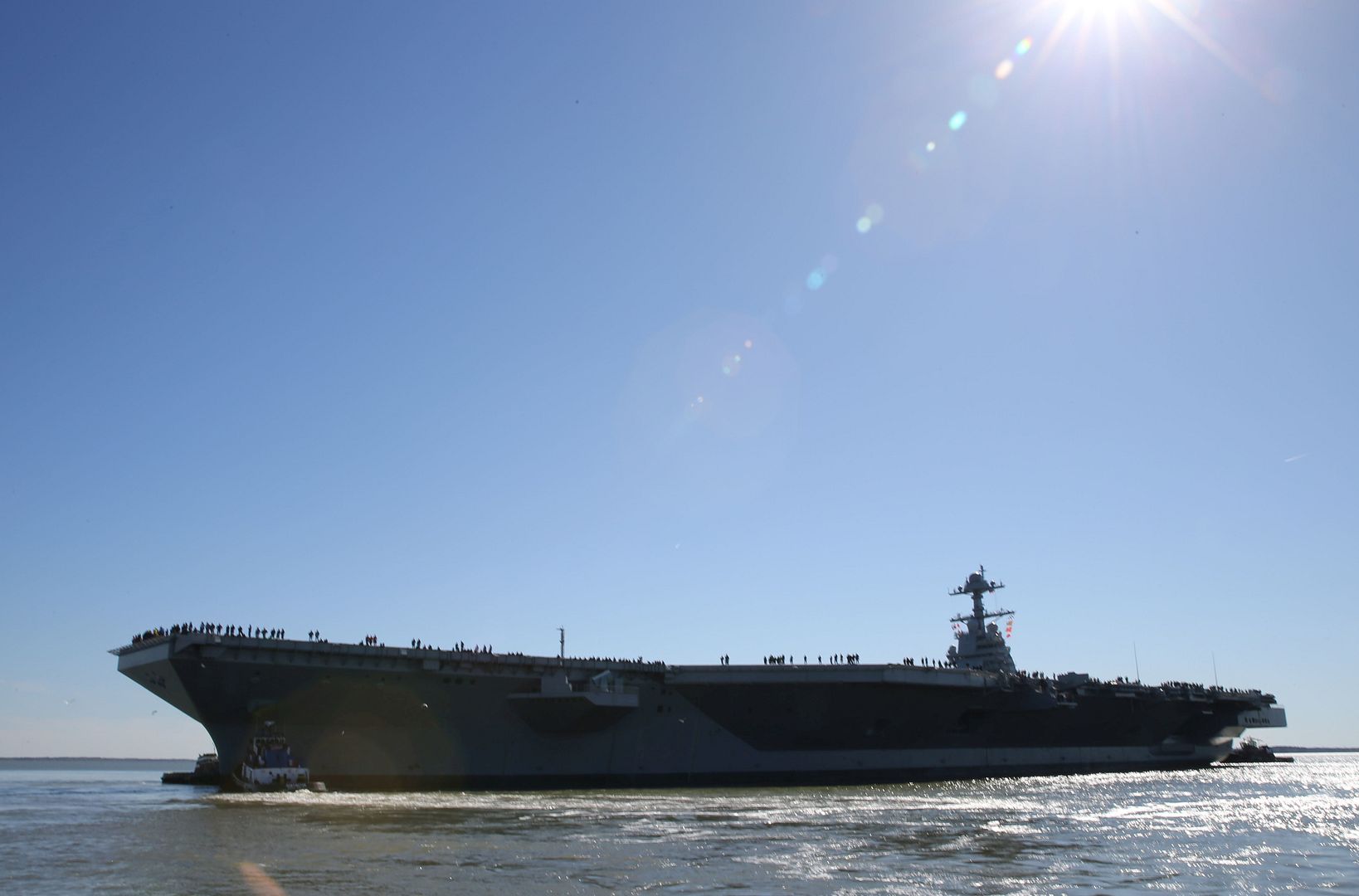
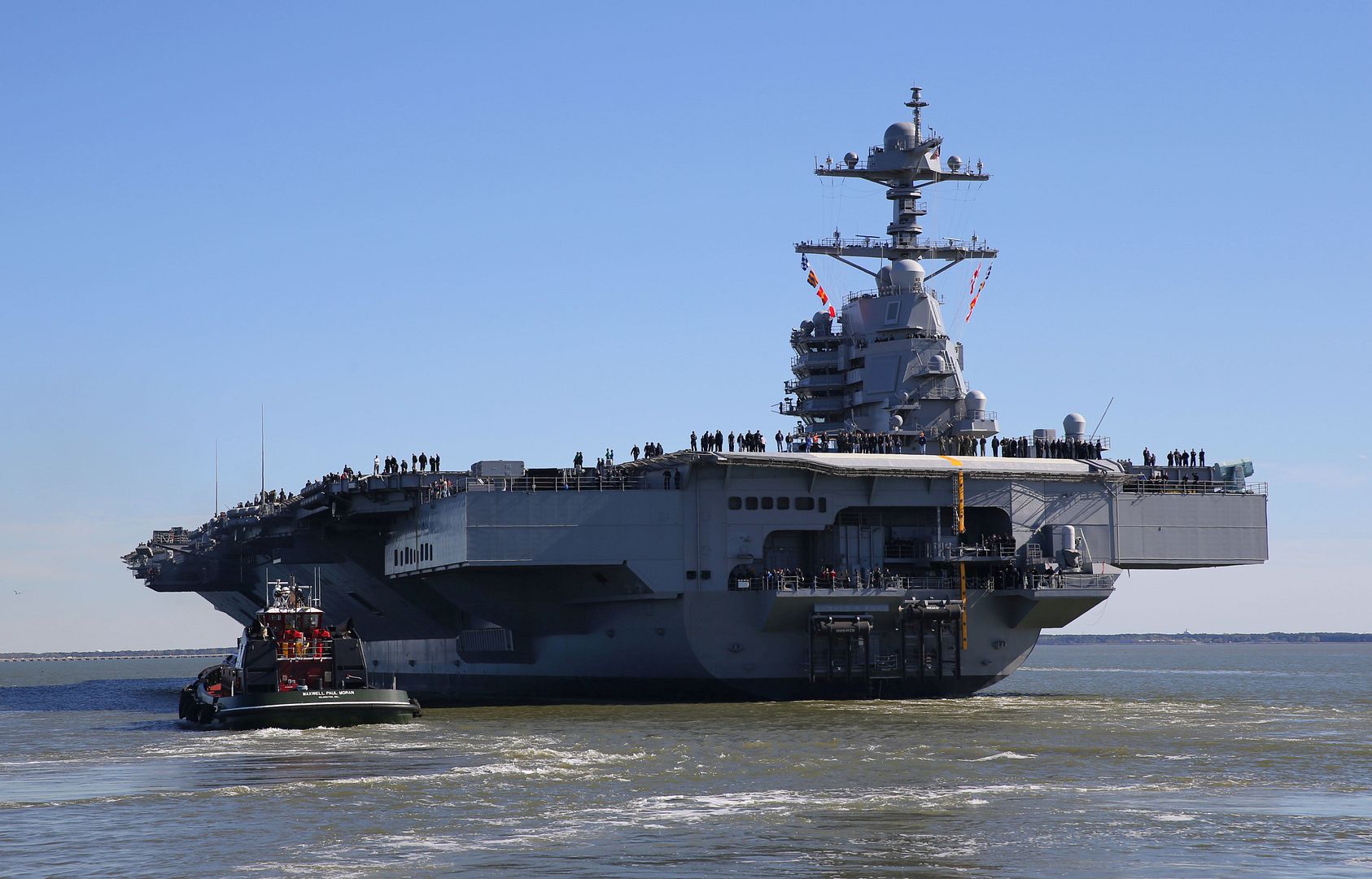
A U.S. Marine Corps UH-1Y Venom assigned to Marine Aviation Weapons and Tactics Squadron One (MAWTS-1) deploys flares during an urban close air support (UCAS) exercise as part of Weapons and Tactics Instructor Course (WTI) 2-17 at Yodaville, Ariz., April 7, 2017. The UCAS exercise was designed to focus on specific employment of tactical air and rotary wing offensive air support aviation assets in order to support the ground combat element scheme of maneuver. WTI is a seven-week training event hosted by MAWTS-1 cadre, which emphasizes operational integration of the six functions of Marine Corps aviation in support of a Marine Air Ground Task Force and provides standardized advanced tactical training and certification of unit instructor qualifications to support Marine Aviation Training and Readiness and assists in developing and employing aviation weapons and tactics. (U.S. Marine Corps photo by Staff Sgt. Artur Shvartsberg)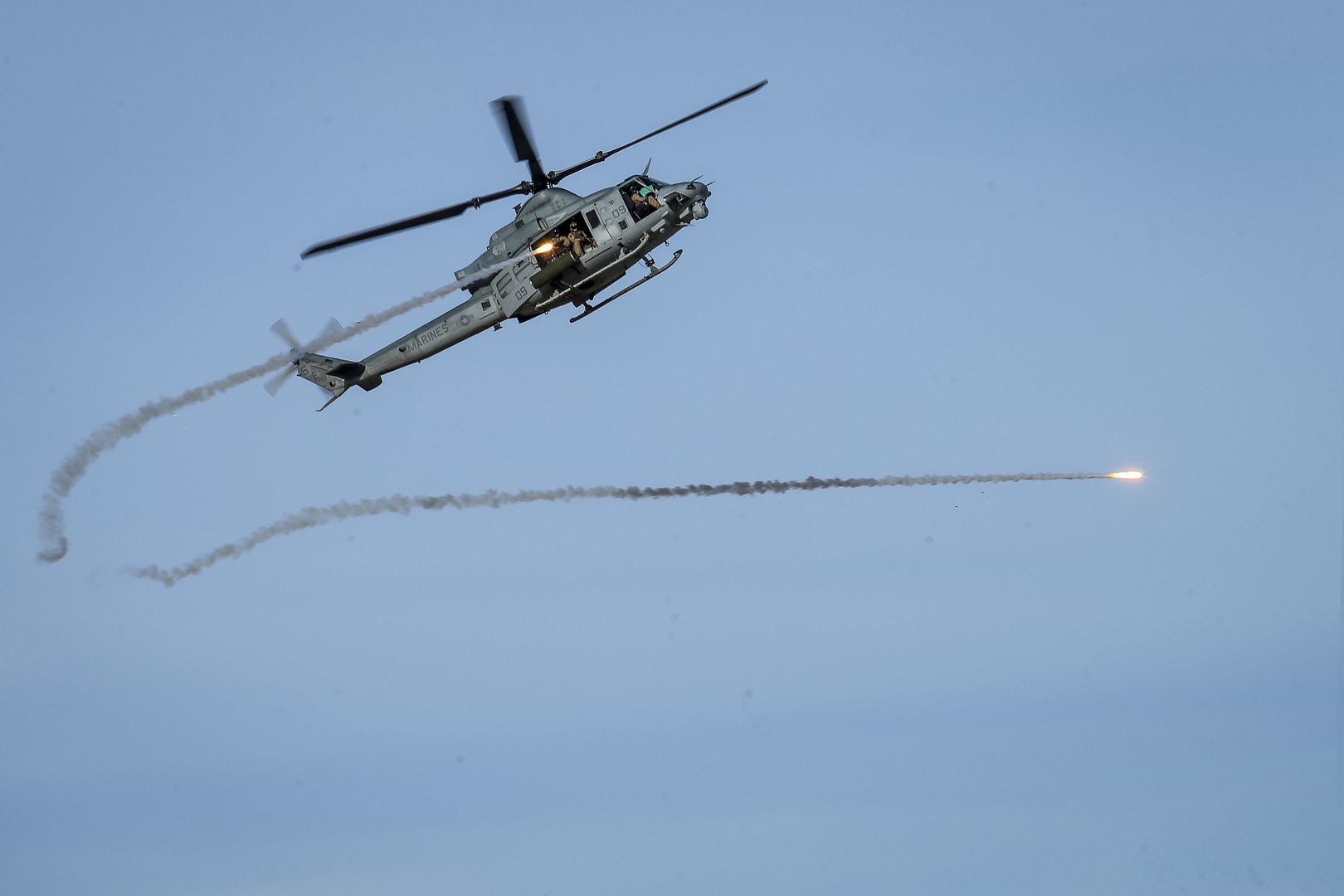
-
 Main AdminSOUTH CHINA SEA (April 8, 2017) Aviation Ordnanceman 2nd Class Luis Valladares signals an MH-60S Seahawk helicopter prior to flight quarters aboard littoral combat ship USS Coronado (LCS 4). Currently on a rotational deployment in U.S. 7th Fleet area of responsibility, Coronado is a fast and agile warship tailor-made to patrol the region's littorals and work hull-to-hull with partner navies, providing 7th Fleet with the flexible capabilities it needs now and in the future. (U.S. Navy photo by Mass Communication Specialist 2nd Class Amy M. Ressler/Released)
Main AdminSOUTH CHINA SEA (April 8, 2017) Aviation Ordnanceman 2nd Class Luis Valladares signals an MH-60S Seahawk helicopter prior to flight quarters aboard littoral combat ship USS Coronado (LCS 4). Currently on a rotational deployment in U.S. 7th Fleet area of responsibility, Coronado is a fast and agile warship tailor-made to patrol the region's littorals and work hull-to-hull with partner navies, providing 7th Fleet with the flexible capabilities it needs now and in the future. (U.S. Navy photo by Mass Communication Specialist 2nd Class Amy M. Ressler/Released)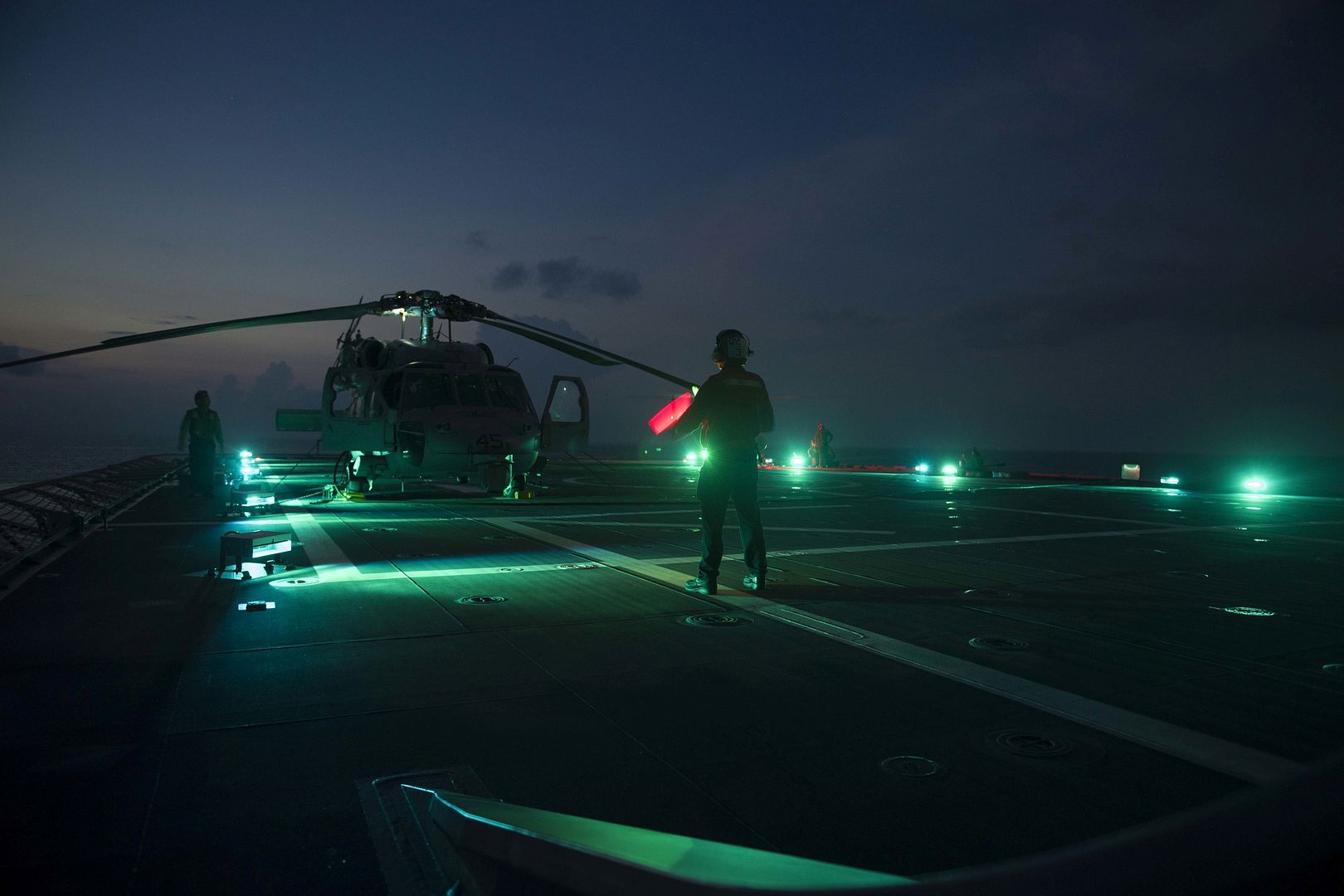
SOUTH CHINA SEA (April 8, 2017) The aircraft carrier USS Carl Vinson (CVN 70) transits the South China Sea. The Carl Vinson Carrier Strike Group is on a regularly scheduled Western Pacific deployment as part of the U.S. Pacific Fleet-led initiative to extend the command and control functions of U.S. 3rd Fleet. U.S Navy aircraft carrier strike groups have patrolled the Indo-Asia-Pacific regularly and routinely for more than 70 years. (U.S. Navy photo by Mass Communication Specialist 3rd Class Matt Brown/Released)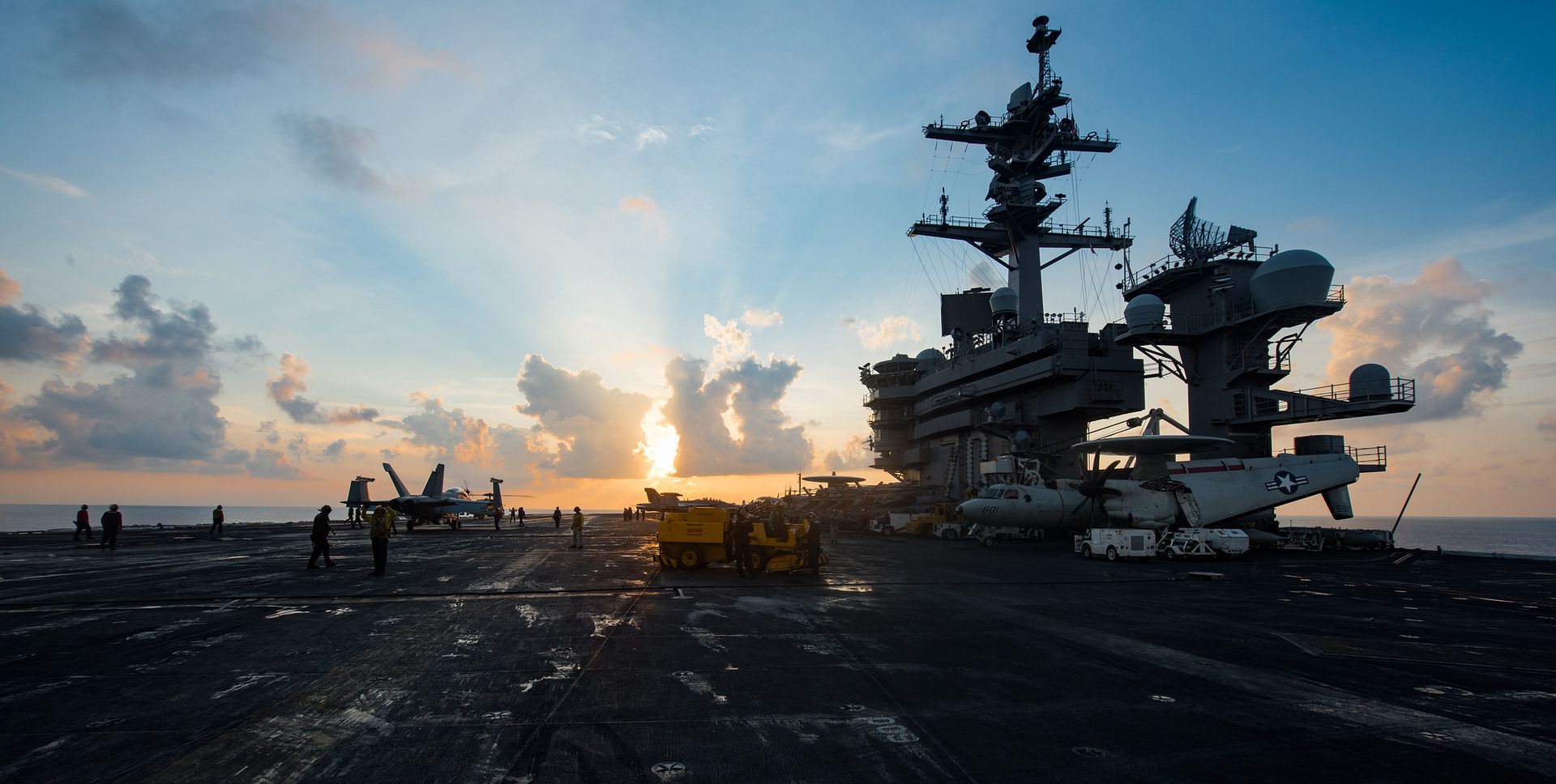
SOUTH CHINA SEA (April 8, 2017) Sailors assigned to the Electronic Attack Squadron (VAQ) 136 "Gauntlets" prepare an EA-18G Growler for flight on the aircraft carrier USS Carl Vinson (CVN 70). The Carl Vinson Carrier Strike Group is on a regularly scheduled Western Pacific deployment as part of the U.S. Pacific Fleet-led initiative to extend the command and control functions of U.S. 3rd Fleet. U.S Navy aircraft carrier strike groups have patrolled the Indo-Asia-Pacific regularly and routinely for more than 70 years. (U.S. Navy photo by Mass Communication Specialist 3rd Class Matt Brown/Released)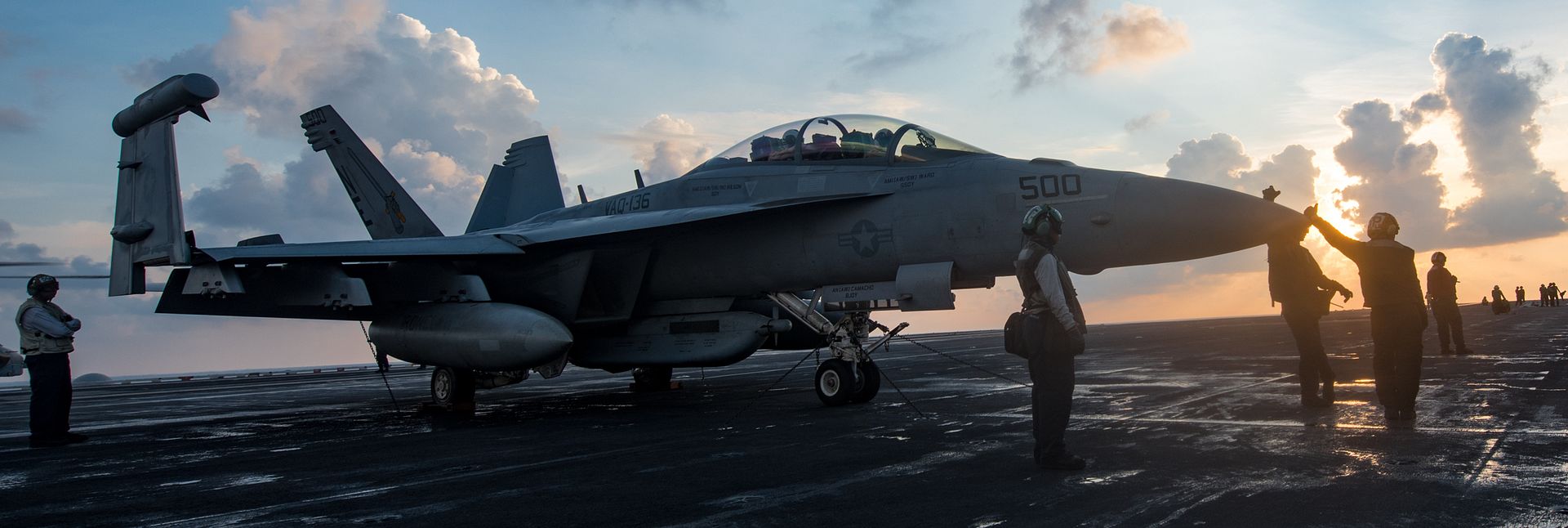
-
 Main AdminCapt. Joshua Gower, 125th Fighter Squadron leads Logan and Maddison, siblings of Sam ?Burner? Bilby, 138th Fighter Wing?s newest Pilot for a Day, in a walk-around aircraft check prior to launch here April 10, 2017. The Pilot for a Day is a program allowing children with potentially life threatening illnesses a chance to experience a day in the life of an F-16 fighter pilot. (U.S. Air National Guard photo by Senior Master Sgt. Roberta A. Thompson)
Main AdminCapt. Joshua Gower, 125th Fighter Squadron leads Logan and Maddison, siblings of Sam ?Burner? Bilby, 138th Fighter Wing?s newest Pilot for a Day, in a walk-around aircraft check prior to launch here April 10, 2017. The Pilot for a Day is a program allowing children with potentially life threatening illnesses a chance to experience a day in the life of an F-16 fighter pilot. (U.S. Air National Guard photo by Senior Master Sgt. Roberta A. Thompson)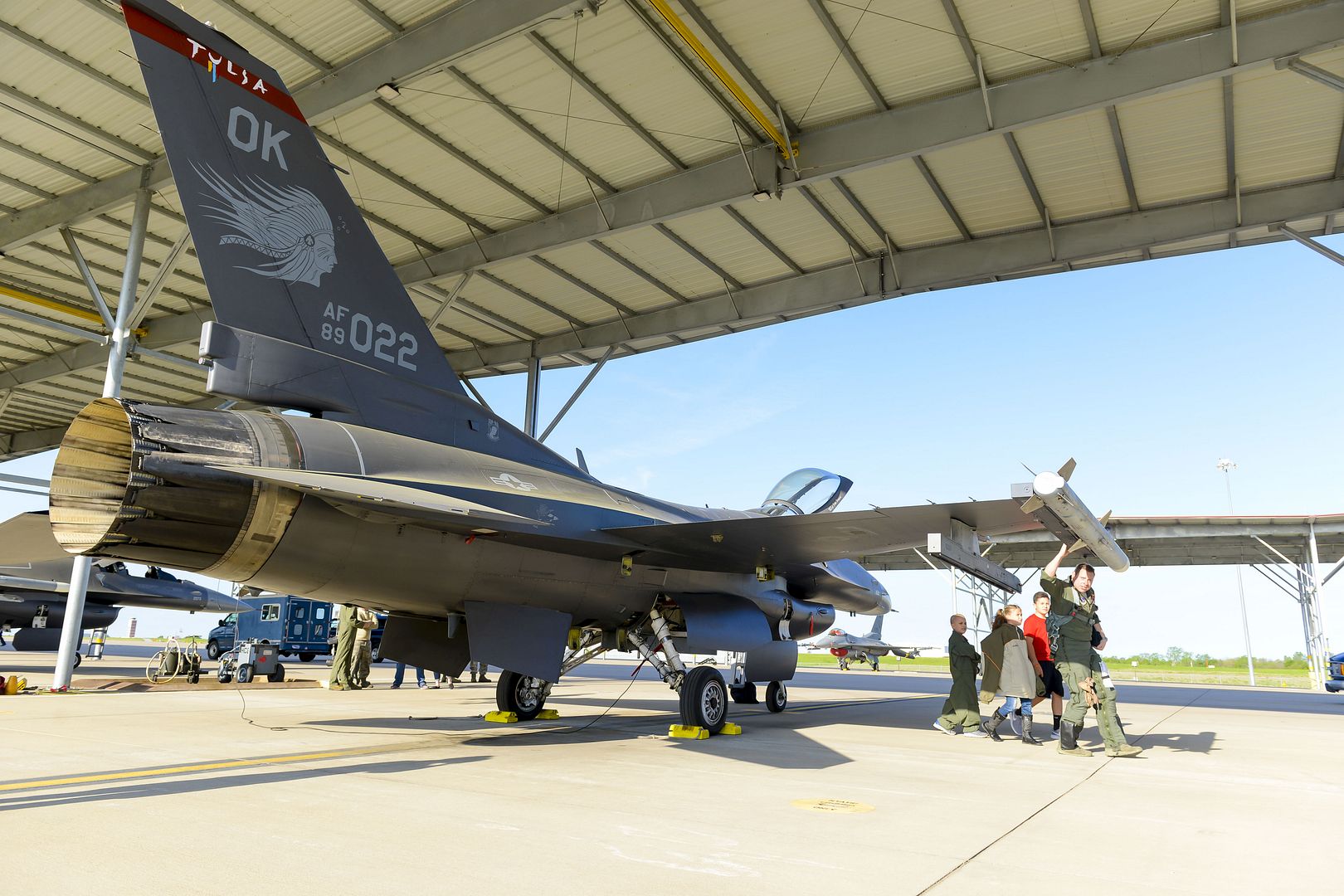
Sam ?Burner? Bilby, 138th Fighter Wing?s newest Pilot for a Day, sits in and learns about a F-16 fighter cockpit during a personalized tour held here April 10, 2017. The Pilot for a Day is a program allowing children with potentially life threatening illnesses a chance to experience a day in the life of an F-16 fighter pilot. (U.S. Air National Guard photo by Senior Master Sgt. Roberta A. Thompson)
That smile says everything
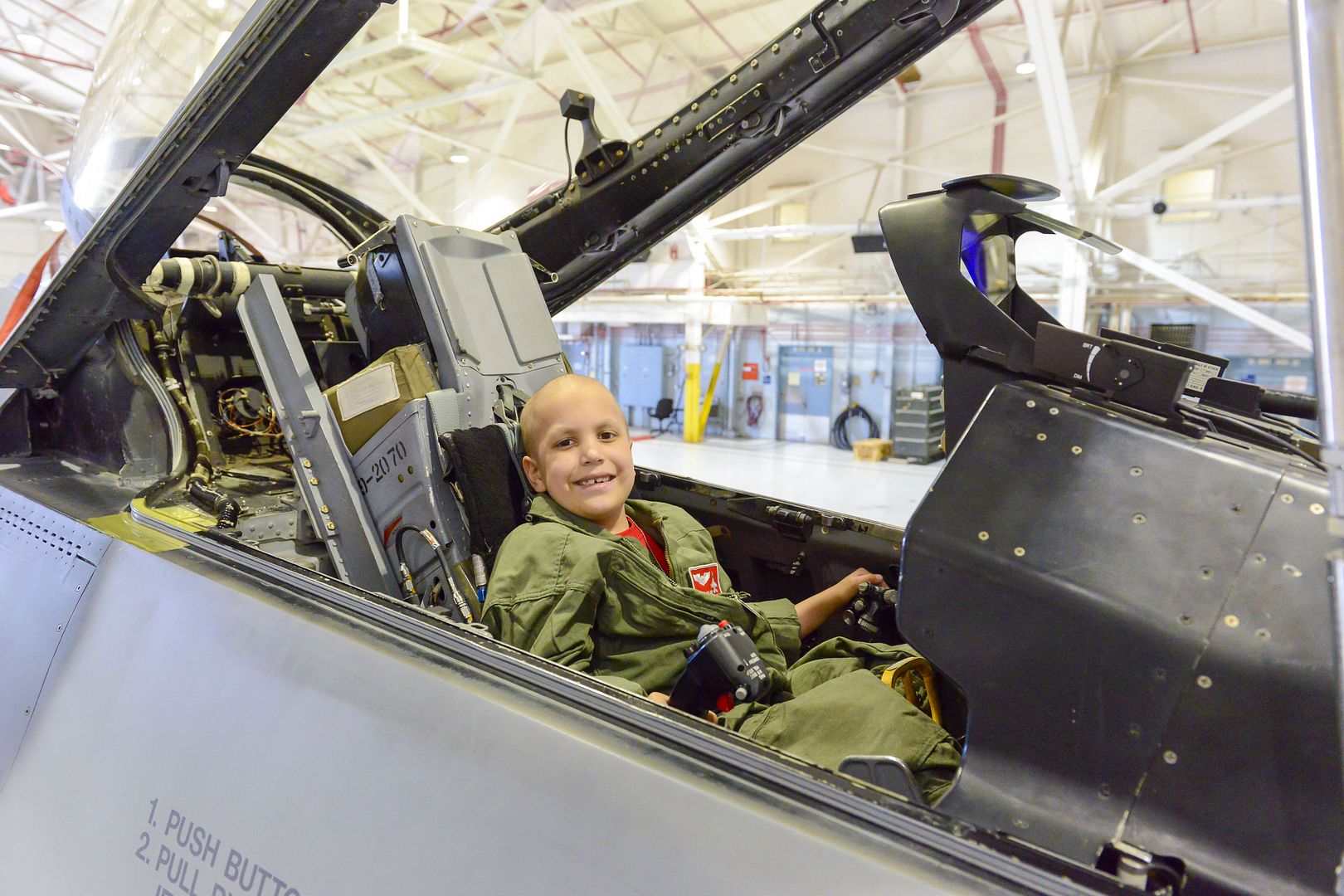
PENSACOLA, Fla. (Apr. 9, 2017) U.S. Navy Flight Demonstration Squadron, The Blue Angels fly in formation with the Patrouille Acrobatique de France enroute to Naval Air Station Pensacola. The Blue Angels are scheduled to perform more than 60 demonstrations across the U.S. in 2017. (U.S. Navy photo by Mass Communication Specialist 3rd Class Dominick Cremeans/Released)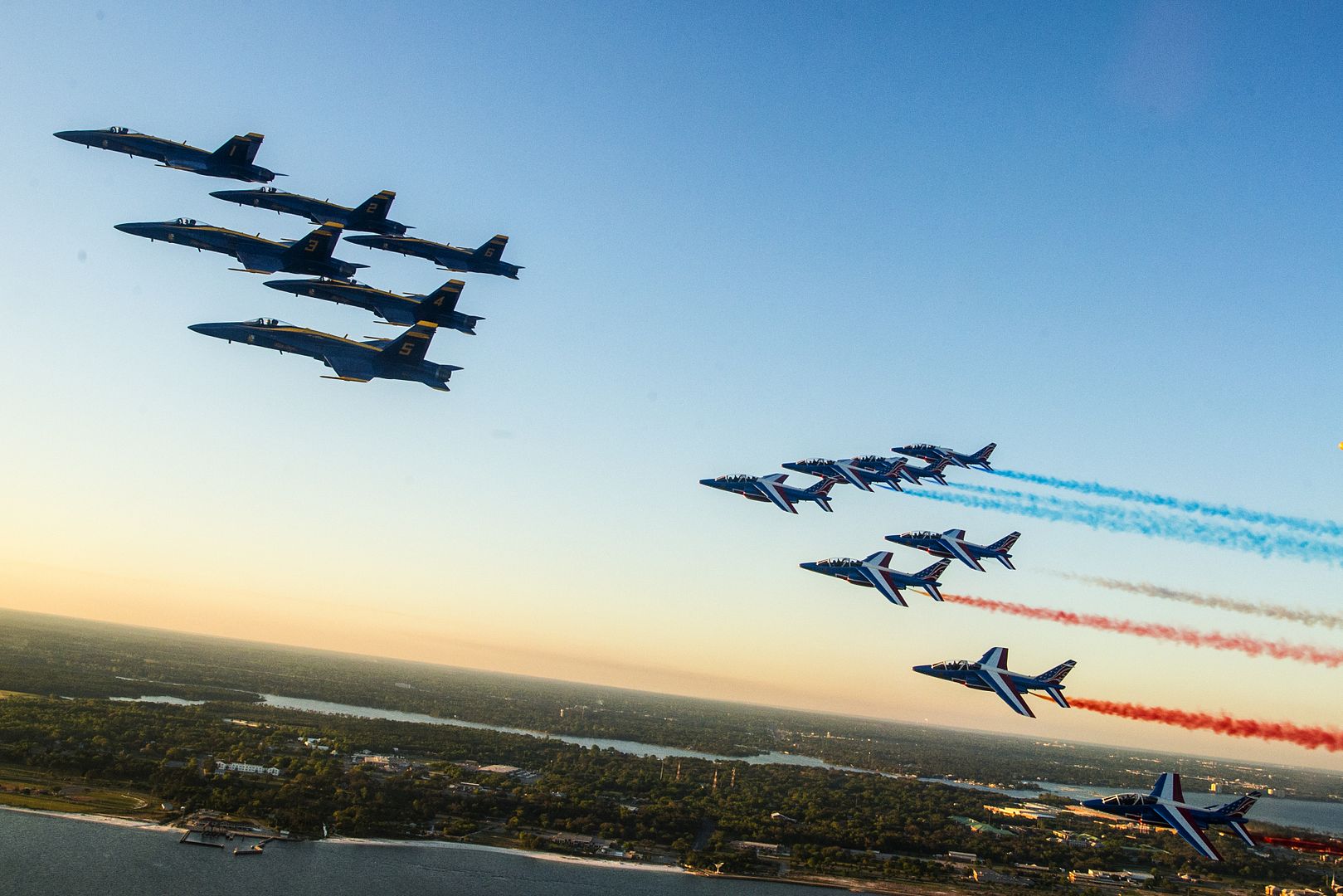
SOUTH CHINA SEA (April 8, 2017) An F/A-18C Hornet from the Strike Fighter Squadron (VFA) 34 ?Blue Blasters? launches from the aircraft carrier USS Carl Vinson (CVN 70) flight deck. The Carl Vinson Carrier Strike Group is on a regularly scheduled Western Pacific deployment as part of the U.S. Pacific Fleet-led initiative to extend the command and control functions of U.S. 3rd Fleet. U.S Navy aircraft carrier strike groups have patrolled the Indo-Asia-Pacific regularly and routinely for more than 70 years. (U.S. Navy photo by Mass Communication Specialist 3rd Class Matt Brown/Released)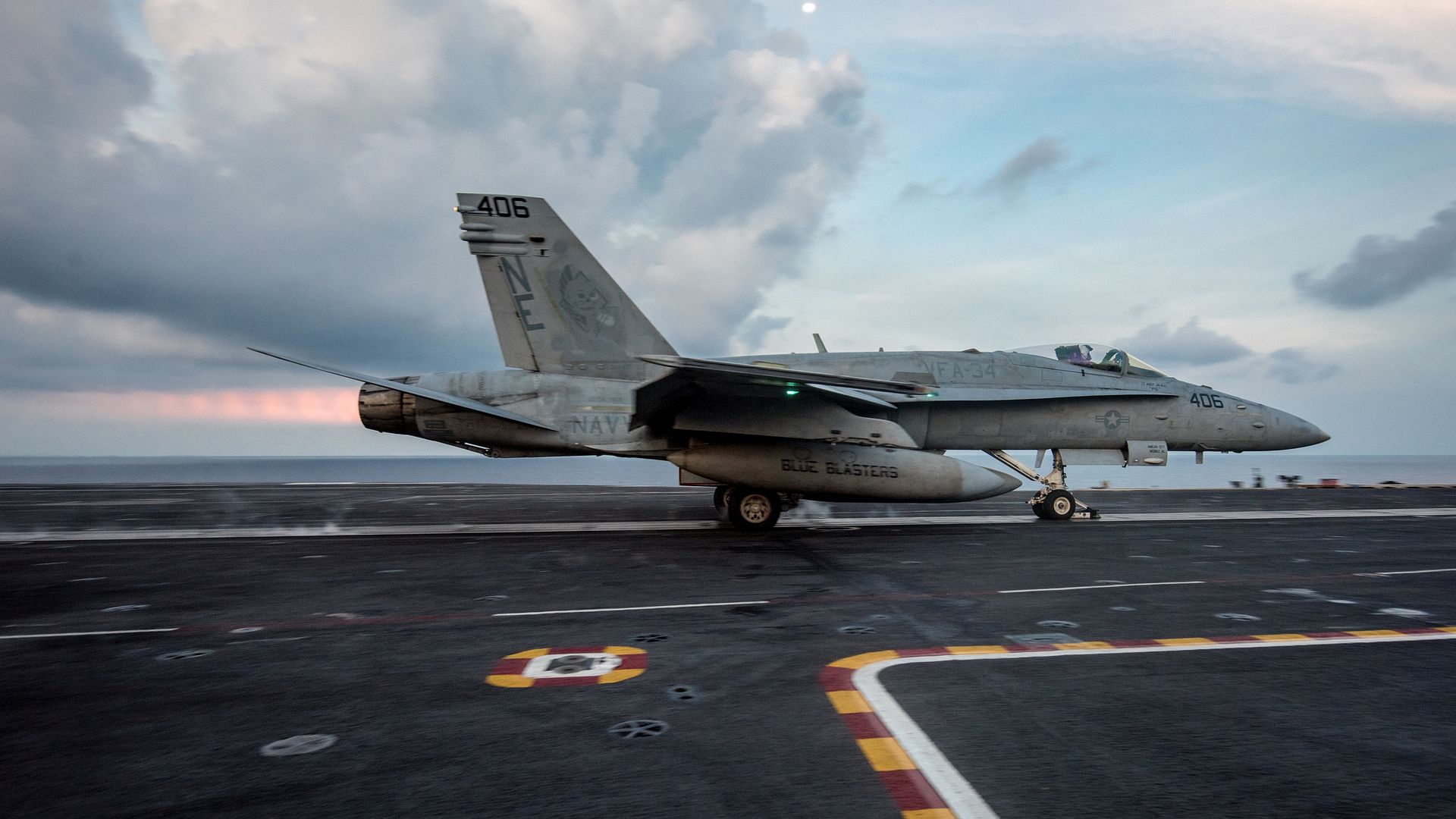
Another shot of The future USS Gerald R. Ford (CVN 78) underway on its own power for the first time. The first-of-class ship -- the first new U.S. aircraft carrier design in 40 years -- will spend several days conducting builder's sea trials, a comprehensive test of many of the ship's key systems and technologies. (U.S. Navy Combat Camera photo by Mass Communication Specialist 2nd Class Ridge Leoni/Released)
U.S. Air Force Maj. Shawn Walsh, 36th Fighter Squadron pilot, and Suroosh Alvi, HBO ?Vice? documentary program correspondent, taxi out to the runway for a familiarization flight at Osan Air Base, Republic of Korea, April 10, 2017. The flight served as a platform to showcase the power and importance of strategic American airpower on the Korean peninsula and how Team Osan contributes to deterring regional threats. (U.S. Air Force photo by Staff Sgt. Victor J. Caputo)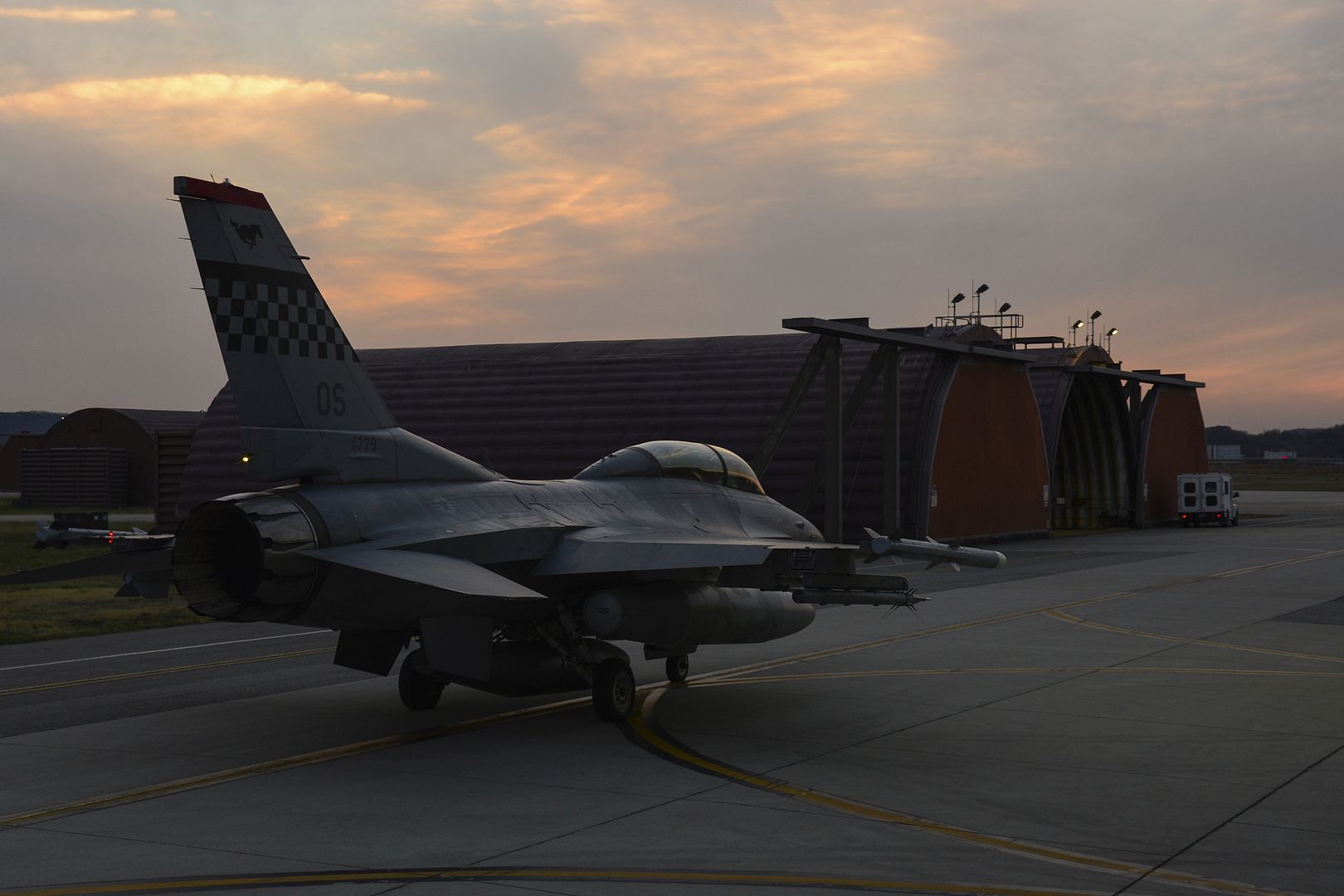
And some amazing photo's from Cpl Manuela Berger, of The CF-18 CF-18 Demo jet!
Taken over 4 Wing Cold Lake on April 6, 2017.
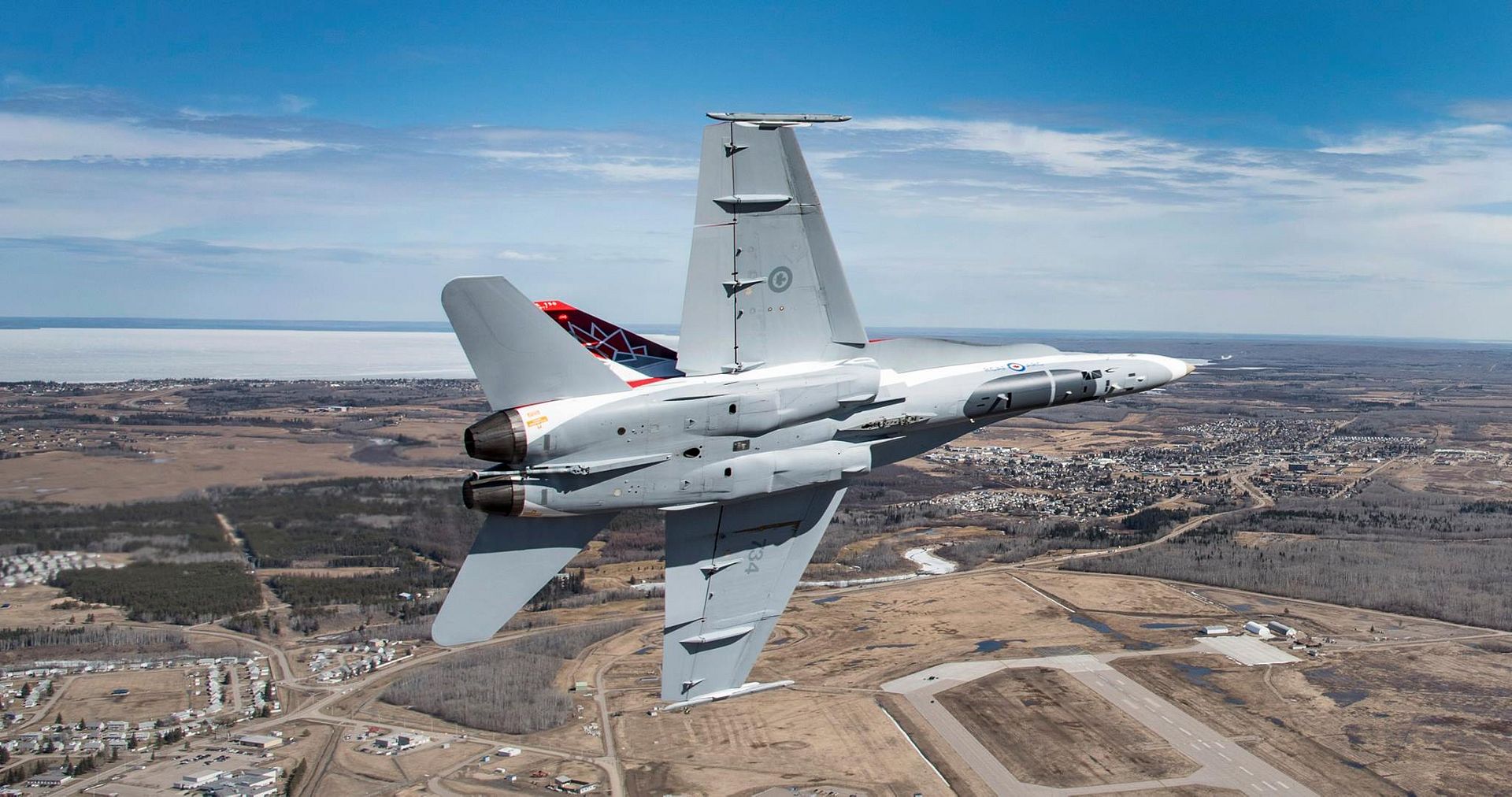
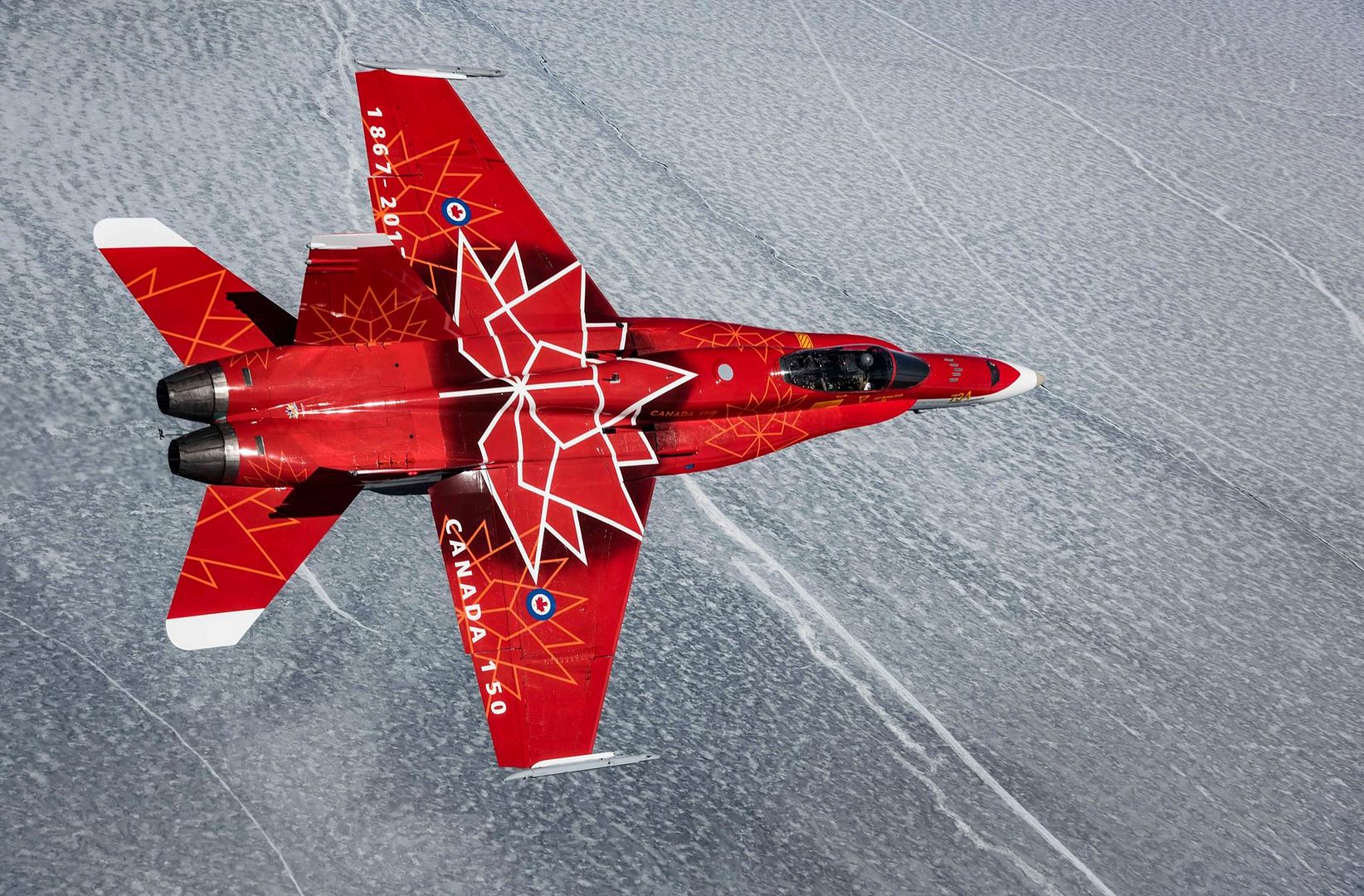
-
 Main AdminATLANTIC OCEAN (April 10, 2017) An F/A-18 Super Hornet assigned to the Gunslingers of Strike Fighter Squadron (VFA) 105 prepares to make an arrested landing on the flight deck of the aircraft carrier USS Dwight D. Eisenhower (CVN 69) (Ike). Ike and its carrier strike group are underway conducting a sustainment exercise in support of the Optimized Fleet Response Plan (OFRP). (U.S. Navy photo by Mass Communication Specialist 3rd Class Nathan T. Beard/Released)
Main AdminATLANTIC OCEAN (April 10, 2017) An F/A-18 Super Hornet assigned to the Gunslingers of Strike Fighter Squadron (VFA) 105 prepares to make an arrested landing on the flight deck of the aircraft carrier USS Dwight D. Eisenhower (CVN 69) (Ike). Ike and its carrier strike group are underway conducting a sustainment exercise in support of the Optimized Fleet Response Plan (OFRP). (U.S. Navy photo by Mass Communication Specialist 3rd Class Nathan T. Beard/Released)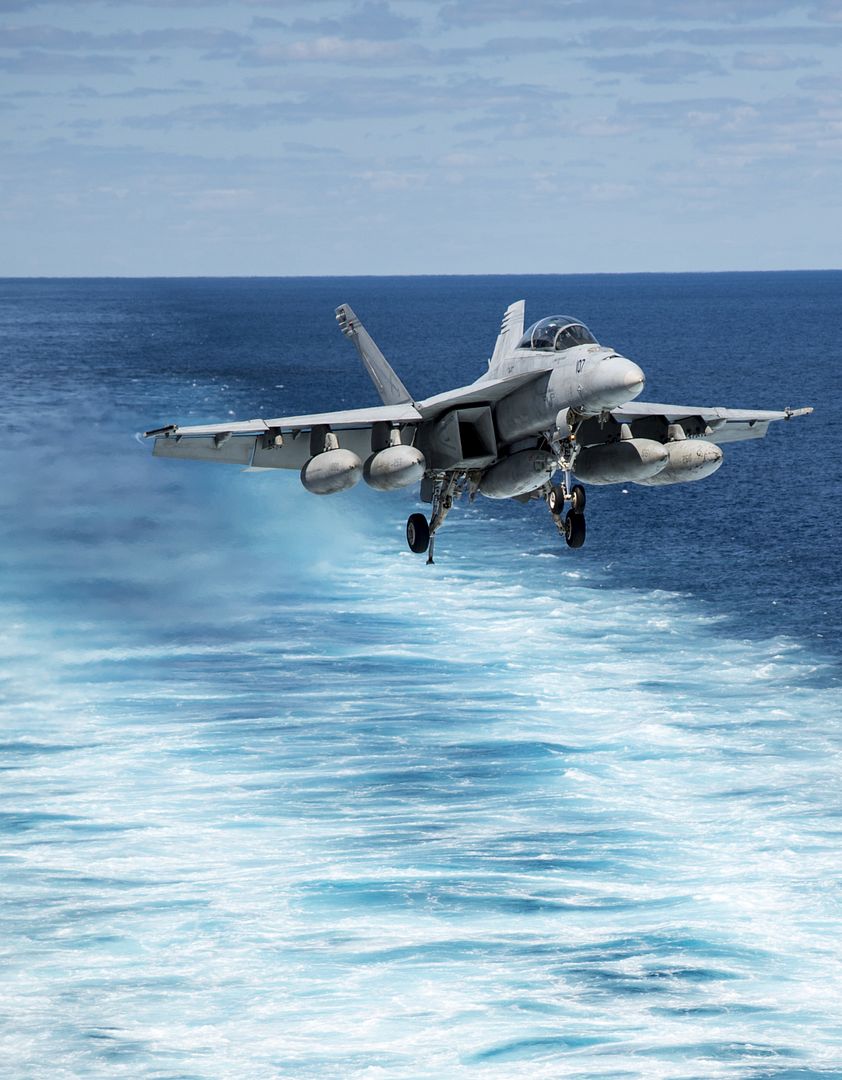
ARABIAN GULF (April 6, 2017) An F/A-18C Hornet attached to the ?Ragin? Bulls? of Strike Fighter Squadron (VFA) 37 lands on the aircraft carrier USS George H.W. Bush (CVN 77) (GHWB). GHWB is deployed in the U.S. 5th Fleet area of operations in support of maritime security operations designed to reassure allies and partners, and preserve the freedom of navigation and the free flow of commerce in the region. (U.S. Navy photo by Mass Communication Specialist 2nd Class Patrick Ian Crimmins/Released)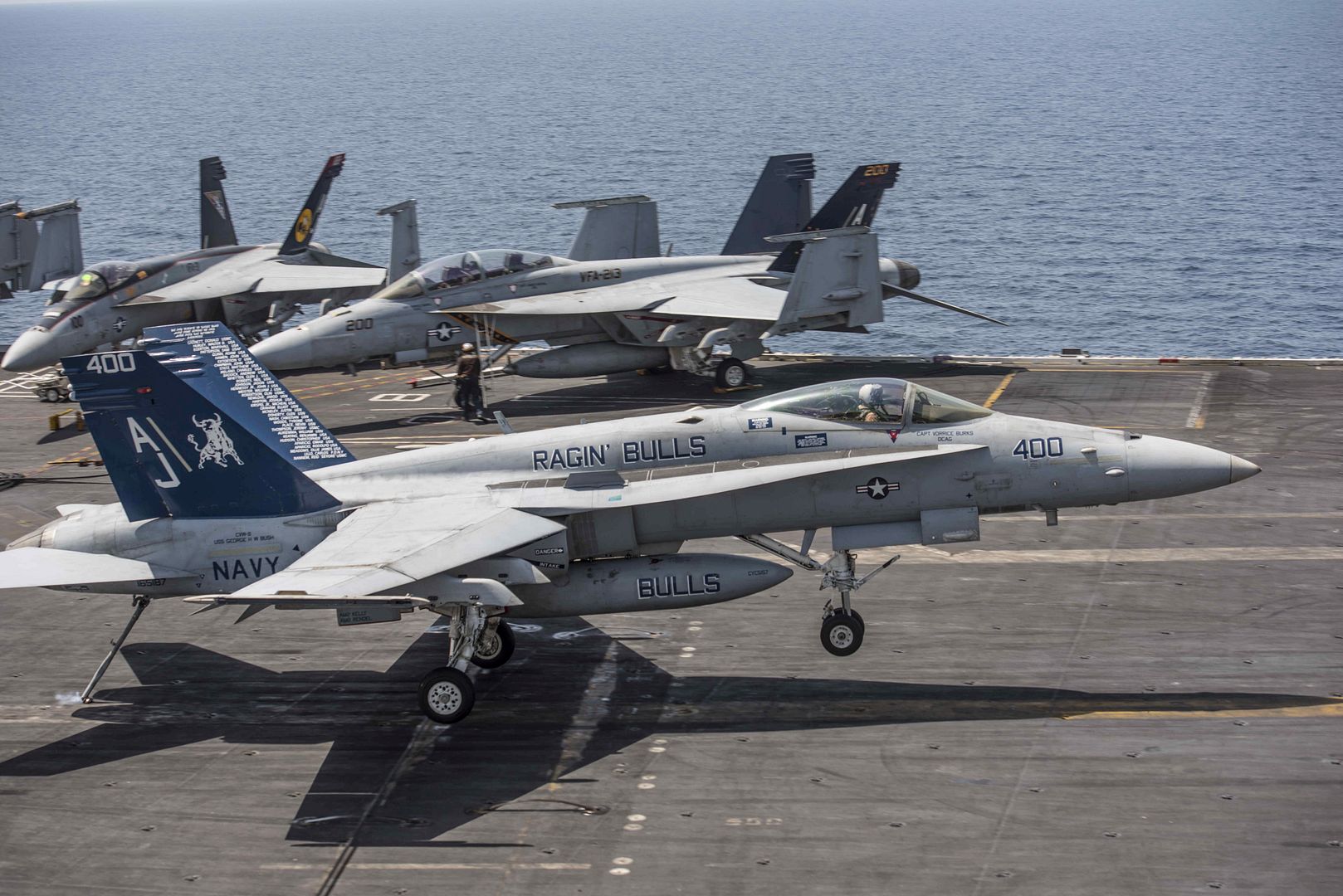
U.S. Marine Corps Lance Cpl. Keon Willingham, a powerline mechanic with Marine Fighter Attack Squadron (VMFA) 121, detaches a hose from the squadron?s F-35B Lightning II aircraft during aviation delivered ground refueling training with Marine Aerial Refueler Transport Squadron (VMGR) 152 at Marine Corps Air Station Iwakuni, Japan, April 11, 2017. The ADGR marked the first evolution of this form of refueling for VMFA-121?s F-35B Lightning II aircraft, and it increases the squadron?s ability to refuel by C-130 aircraft in austere locations when other resources may not be available. (U.S. Marine Corps photo by Lance Cpl. Joseph Abrego)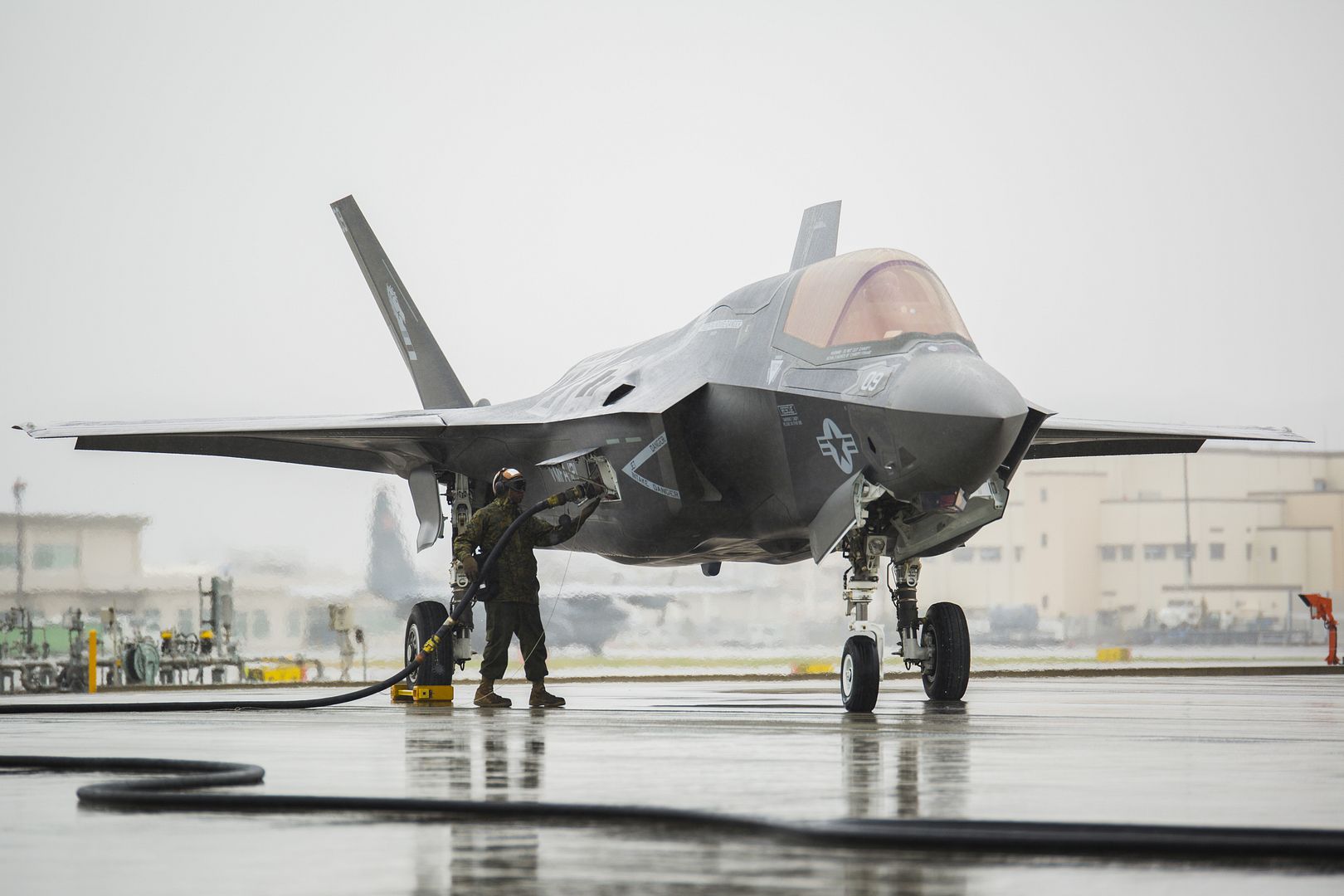
ATLANTIC OCEAN (April 9, 2017)
An F/A-18E Super Hornet assigned to the Gunslingers of Strike Fighter Squadron (VFA) 105 prepares to make an arrested landing on the flight deck of the aircraft carrier USS Dwight D. Eisenhower (CVN 69) (Ike). Ike and its carrier strike group are underway participating in a sustainment exercise designed to maintain deployment readiness as part of the Optimized Fleet Response Plan (OFRP). U.S. Navy photo by Mass Communication Specialist 3rd Class Anderson W. Branch (Released)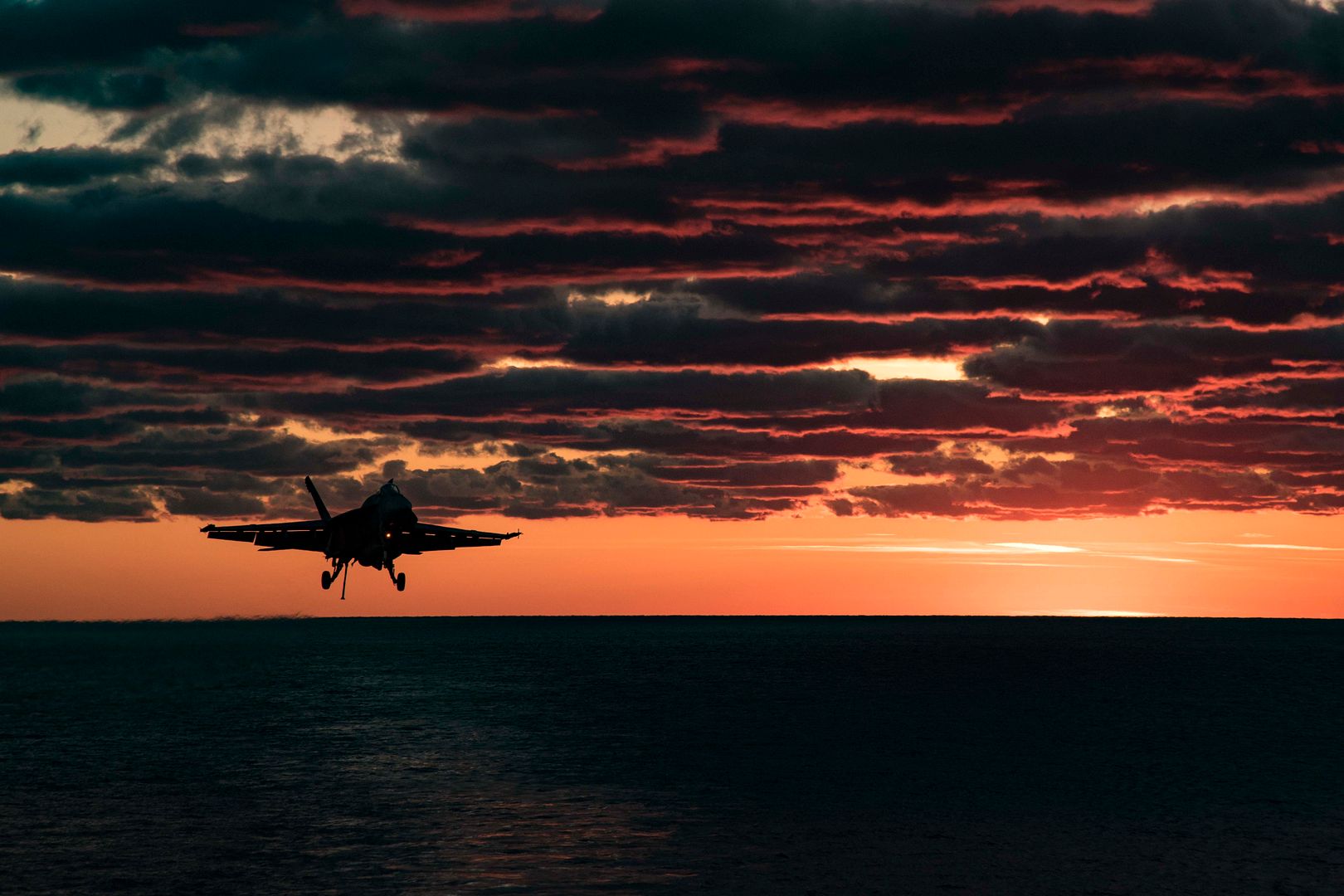
Rio de Janeiro, Brazil ? April 11, 2017 ? As part of the celebrations for the 20 years of commercial operation of the 50-seat ERJ 145 jet, Embraer receives, as of today, almost 30 operators of the jet family for the two-day Embraer Operators Conference (EOC), in Rio de Janeiro. The first commercial flight of the ERJ 145 occurred on April 6, 1997, with U.S. airline Continental Express.
?The ERJ 145 marked Embraer?s commercial renaissance, paving the way for the development of new programs, such as the E-Jets, which moved the Company into the lead of the commercial jet market for up to 130-seat aircraft,? said Paulo Cesar de Souza e Silva, Embraer President & CEO. ?Personally, I have a great affection for the program, which brought me to Embraer. I participated in practically all the jet's sales campaigns as Vice President of Customer Financing.?
The ERJ 145 family of jets consists of the ERJ 145 (50 seats), the ERJ 135 (37 seats), the ERJ 140 (44 seats) and the ERJ 145 XR (long-range 145 version). Since its entry into operation, the ERJ 145 family has accumulated more than 27 million flight hours and almost 730 million passengers transported, being used by more than 120 operators.
Over the last seven years, the ERJ's global customer base has almost doubled, from 39 operators, in 2010, to 70, today. During the same period, the application and use of ERJ models has been growing in emerging markets, such as Africa, where the ERJ fleet has increased from 16 units in 2010 to almost 60 jets in 2017.
Robust and with excellent operating history, the ERJ platform is a success in commercial aviation, with almost 900 units delivered, having applications in the business aviation market, with the Legacy 600 and Legacy 650 jets, as well as in defense, such as the AEW&C, Multi-Intel and maritime patrol for the Intelligence, Surveillance and Reconnaissance (ISR) segment.
In total, more than 1,200 aircraft based on the ERJ 145 platform have already been delivered worldwide, making the ERJ program one of the most successful in the aircraft industry.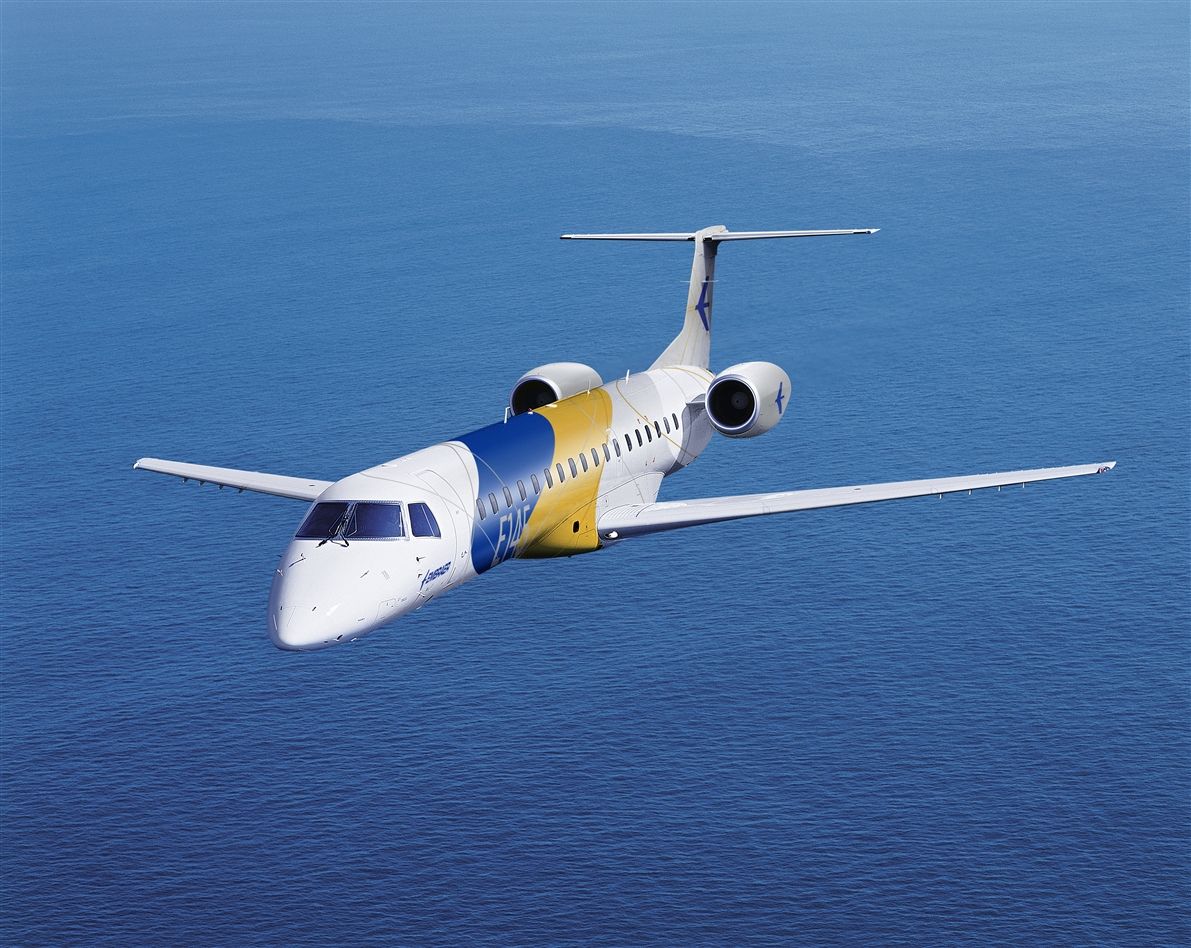
The 500th Eurofighter Typhoon has been delivered today to the Italian Air Force during a special ceremony held at Leonardo Aircraft Division?s Turin site. Lt. Gen. Gabriele Salvestroni, Logistic Commander of the Italian Air Force, took delivery of the aircraft in the presence of Filippo Bagnato, Leonardo Aircraft Division?s Managing Director, Volker Paltzo, Chief Executive Officer of Eurofighter Jagdflugzeug, Peter Schmidt, Deputy General Manager of NETMA, and representatives from the Eurofighter partner nations and partner companies.
Volker Paltzo, Chief Executive Officer of Eurofighter Jagdflugzeug GmbH, said: ?The 500 strong Eurofighter Typhoon fleet represents one of the largest and most capable fighter fleets in the western hemisphere, and will be the backbone of European airpower for decades to come. Today?s handover is a great testament to the programme?s success, and I firmly expect to see the fleet grow further as our partner companies continue to pursue opportunities for more orders internationally.?
Filippo Bagnato, Leonardo Aircraft Division Managing Director, said: ?We are very proud to deliver the 500th Eurofighter Typhoon produced to the Italian Air Force. The Eurofighter Typhoon is the largest collaborative industrial programme in Europe, it is a successful and significant contributor to the nation?s economic wellbeing, employing high-skilled workers and generating thousands of high-value manufacturing and engineering jobs. We are now fully committed to completing deliveries to the Italian Air Force, to develop the capabilities of the aircraft, and to the activities envisaged by Kuwait?s contract, while continuing to pursue a number of significant market opportunities around the world.?
The first Eurofighter was delivered to the UK Royal Air Force at the end of 2003. The 100th Eurofighter was delivered to the UK Royal Air Force in September 2006. The 200th aircraft was handed over to the German Air Force in November 2009. The 300th aircraft was delivered to the Spanish Air Force in October 2011, and the 400th to the German Air Force in December 2013.
The aircraft has demonstrated, and continues to demonstrate, high reliability across the globe in all climates. It has been deployed on multiple occasions on Baltic Air Policing duties with the Spanish, German, Italian and UK air forces and has been combat proven during operations in Libya, Iraq and Syria.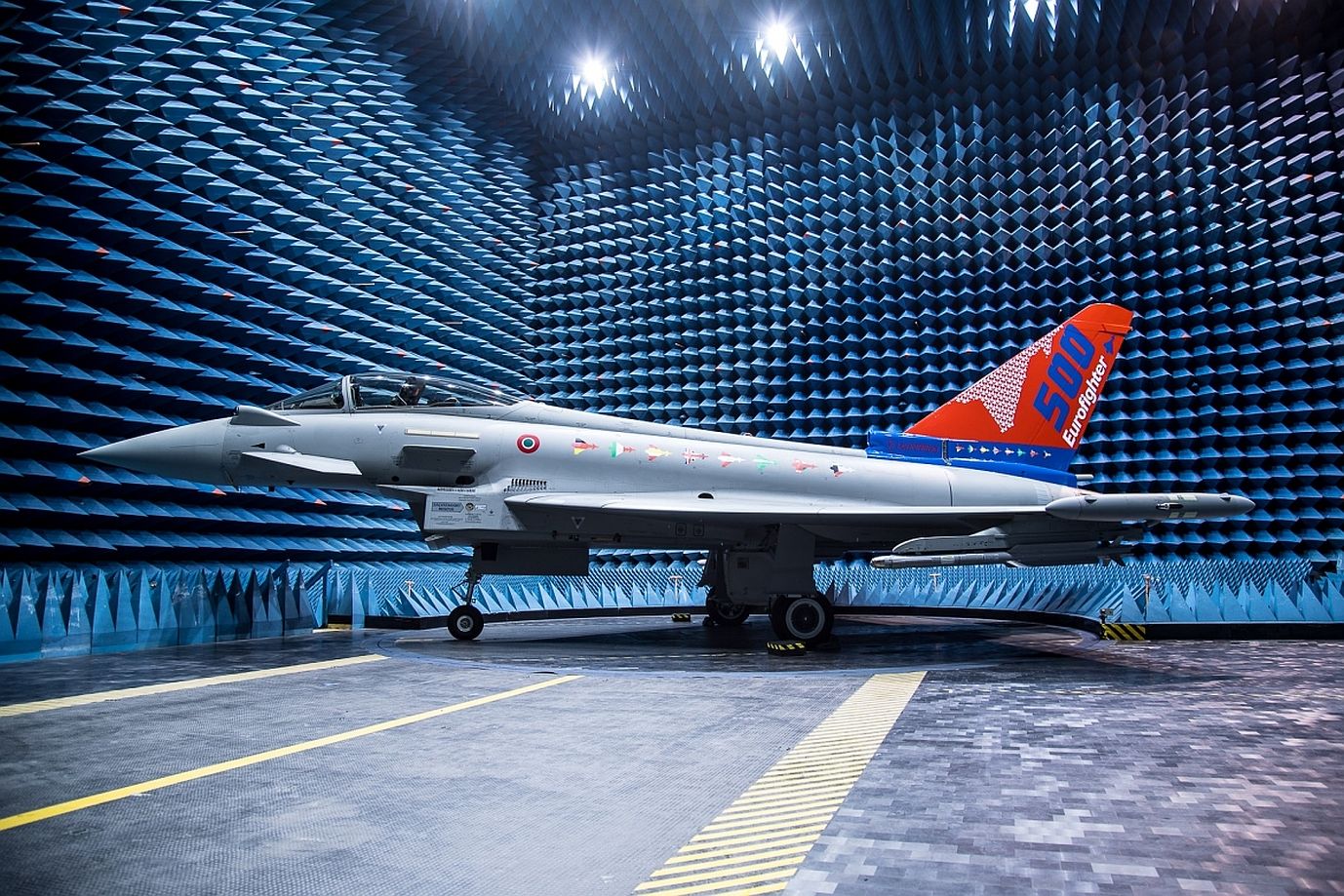
Through a series of continual enhancement steps, new capabilities are being added to the aircraft, with test and integration activity currently underway for advanced beyond visual range air-to-air missile Meteor, the precision guided cruise missile Storm Shadow and the precision attack missile Brimstone. The integration of these weapon systems will ensure Eurofighter Typhoon maintains its position as the most capable, agile and reliable swing-role fighter available on the international market today.
-
 Main AdminF-15 Eagles from the 67th Fighter Squadron perform an elephant walk during a no-notice readiness exercise April 12, 2017, at Kaden Air Base, Japan. Exercises like this keep members of Team Kadena ready for any situation and to demonstrate their capability to rapidly generate the Wing's full combat capability in the event of an attack on Okinawa or on allies throughout the Indo-Asia Pacific Theater. (U.S. Air Force photo by Senior Airman John Linzmeier)
Main AdminF-15 Eagles from the 67th Fighter Squadron perform an elephant walk during a no-notice readiness exercise April 12, 2017, at Kaden Air Base, Japan. Exercises like this keep members of Team Kadena ready for any situation and to demonstrate their capability to rapidly generate the Wing's full combat capability in the event of an attack on Okinawa or on allies throughout the Indo-Asia Pacific Theater. (U.S. Air Force photo by Senior Airman John Linzmeier)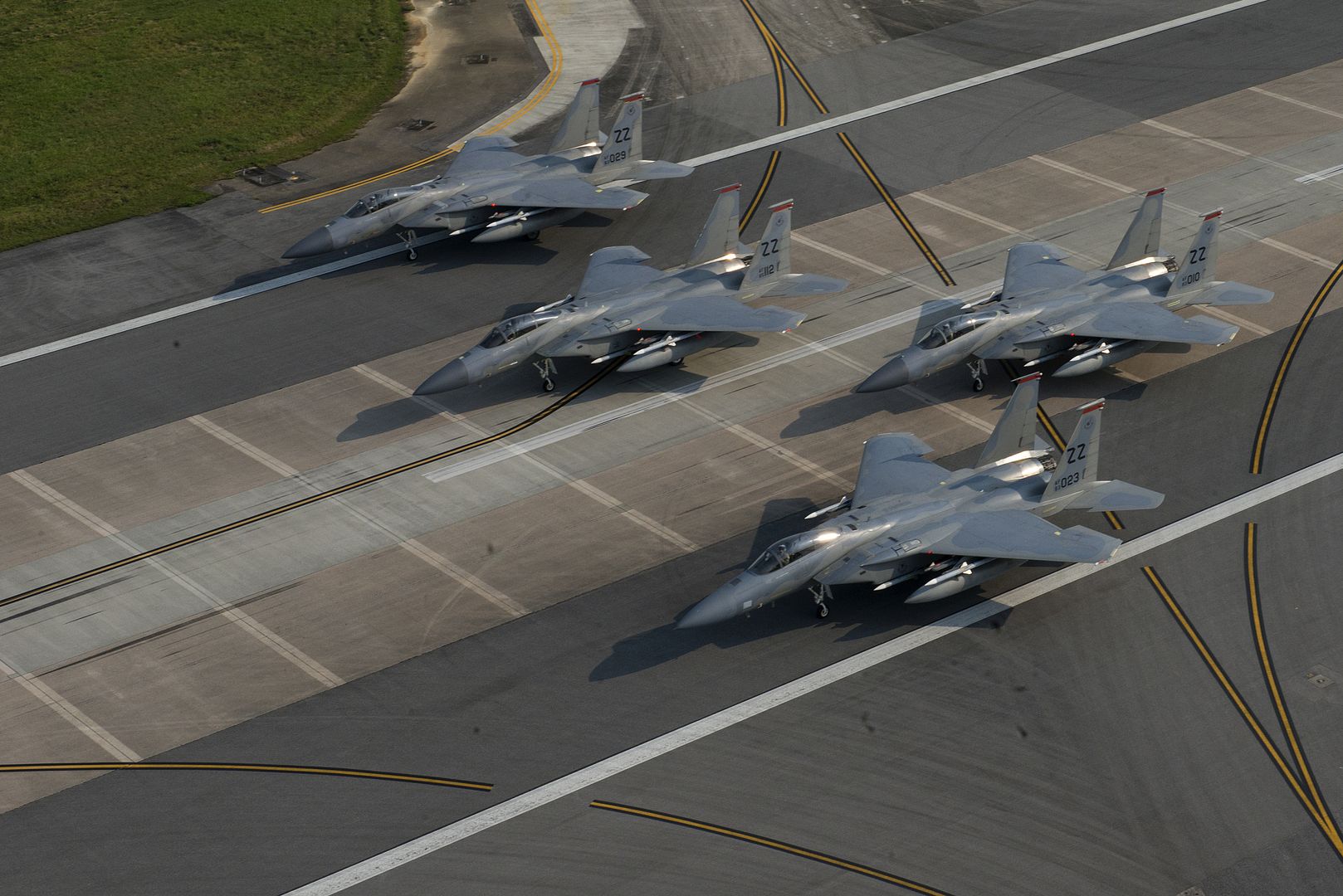
F-15 Eagles from the 67th Fighter Squadron perform an elephant walk during a no-notice readiness exercise April 12, 2017, at Kadena Air Base, Japan. The exercise demonstrated Team Kadena's ability to rapidly respond to and generate air combat power against a simulated attack on Okinawa. Operating from the largest U.S. installation in the Asia-Pacific region, the 18th Wing defends U.S. and Japanese mutual interests by providing a forward power projection platform with fully integrated, deployable, combat power. (U.S. Air Force photo by Senior Airman John Linzmeier)
A 909th Air Refueling Squadron KC-135 Stratotanker joins an elephant walk during a no-notice readiness exercise April 12, 2017, at Kadena Air Base, Japan. Maintaining operational readiness is essential for the 18th Wing to be able to respond to any natural disaster or threat in the region. The 909th ARS enables joint and allied forces to extend air operations range and times on station, enhancing their ability to deter and respond to possible threats throughout the Pacific region. (U.S. Air Force photo by Senior Airman John Linzmeier)
PACIFIC OCEAN (April 11, 2017) An F/A-18C Hornet assigned to the Stingers of Strike Fighter Squadron (VFA) 113, piloted by Cmdr. Erik "Popeye" Doyle, launches from the flight deck of the aircraft carrier USS Theodore Roosevelt (CVN 71). Theodore Roosevelt is underway conducting a tailored ship's training availability off the coast of Southern California. (U.S. Navy photo by Mass Communication Specialist Seaman Bill M. Sanders/Released)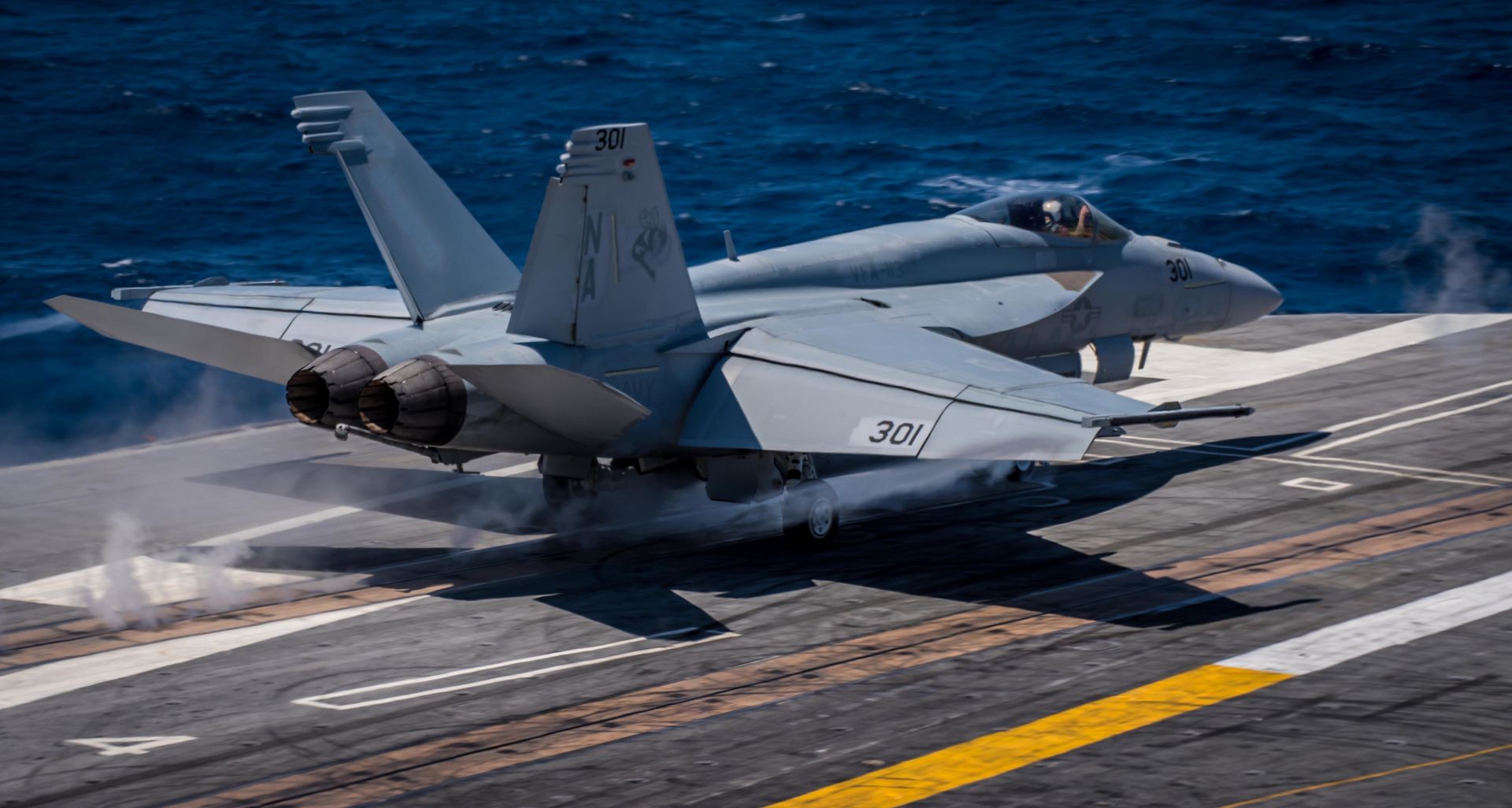
SOUTH CHINA SEA (April 10, 2017) An F/A-18E Super Hornet from the "Kestrels" of Strike Fighter Squadron (VFA) 137 takes off from the aircraft carrier USS Carl Vinson (CVN 70). The Carl Vinson Carrier Strike Group is on a scheduled western Pacific deployment as part of the U.S. Pacific Fleet-led initiative to extend the command and control functions of U.S. 3rd Fleet. U.S Navy aircraft carrier strike groups have patrolled the Indo-Asia-Pacific regularly and routinely for more than 70 years. (U.S. Navy photo by Mass Communication Specialist 2nd Class Sean M. Castellano/Released)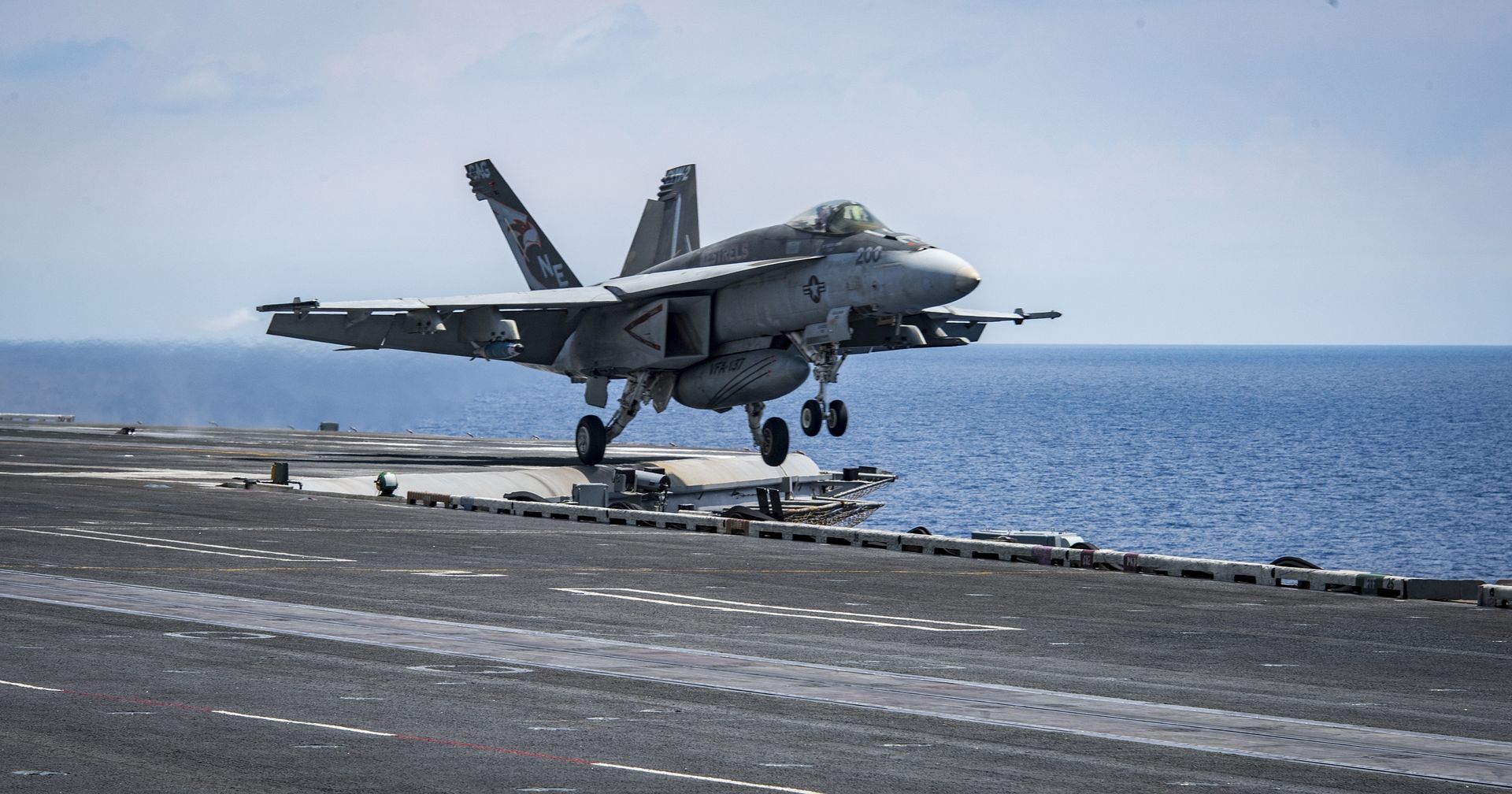
U.S. Marine Corps UH-1Y Venoms assigned to Marine Aviation Weapons and Tactics Squadron One (MAWTS-1) depart after inserting U.S. Marines with 2nd Battalion, 6th Marine Regiment into the objective area during a heavy huey raid as part of Weapons and Tactics Instructor Course (WTI) 2-17 at Yuma Proving Grounds, Ariz., April 12, 2017. The exercise was designed to focus on executing a company air assault raid supported by fixed wing and rotary wing escort, and simulated aviation delivered fires. WTI is a seven-week training event hosted by MAWTS-1 cadre, which emphasizes operational integration of the six functions of Marine Corps aviation in support of a Marine Air Ground Task Force and provides standardized advanced tactical training and certification of unit instructor qualifications to support Marine Aviation Training and Readiness and assists in developing and employing aviation weapons and tactics. (U.S. Marine Corps photo by Staff Sgt. Artur Shvartsberg)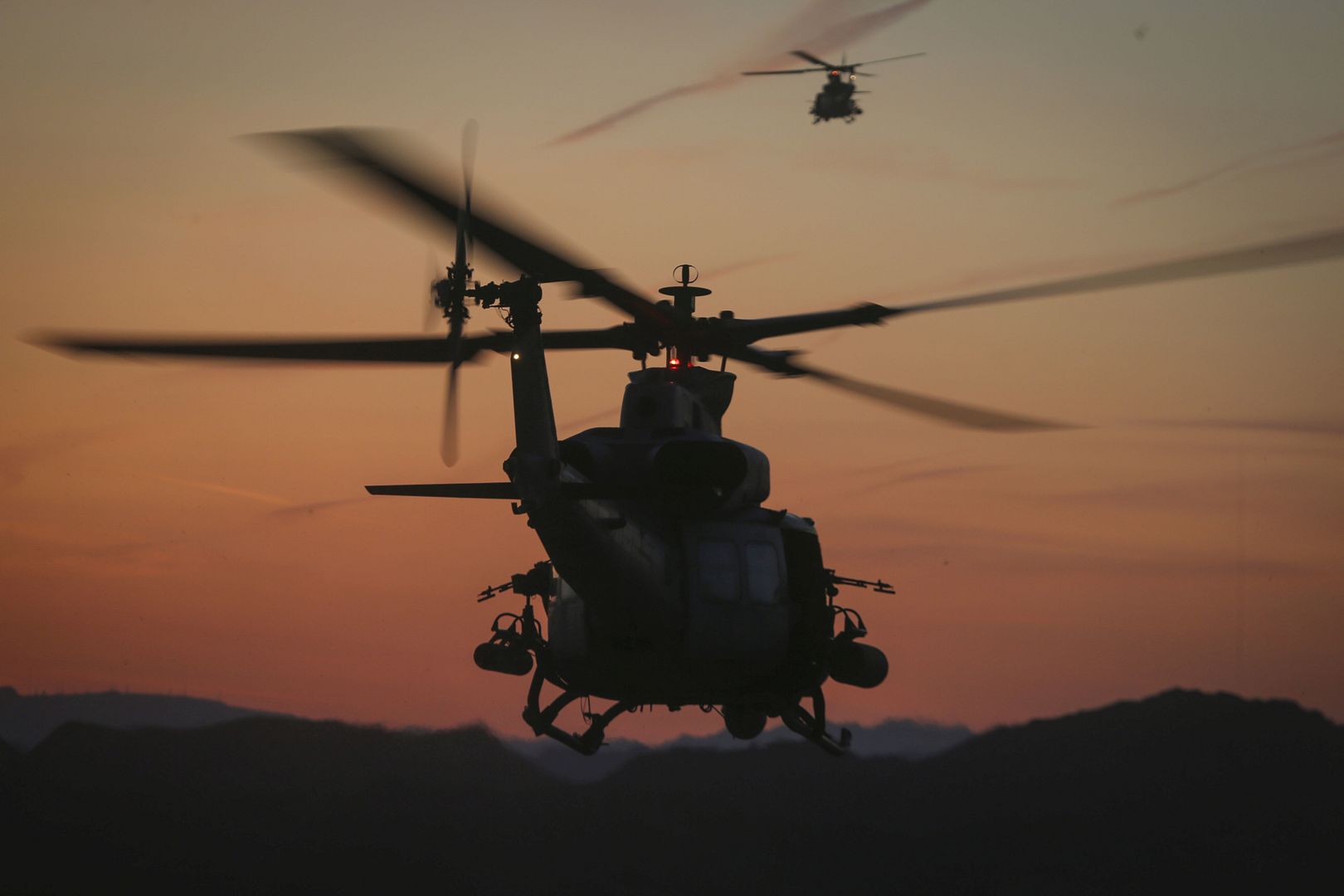
A U.S. Marine Corps AH-1Z Viper assigned to Marine Aviation Weapons and Tactics Squadron One (MAWTS-1) deploys flares during offensive air support exercise (OAS) 5 in support of Weapons and Tactics Instructor course (WTI) 2-17 at Chocolate Mountain Aerial Gunnery Range, Ariz., April 11, 2017. OAS is designed to focus on the integration of all air combat element aviation assets with a developed ground scheme of maneuver to conduct close air support. WTI is a seven-week training event hosted by MAWTS-1 cadre, which emphasizes operational integration of the six functions of Marine Corps aviation in support of a Marine Air Ground Task Force and provides standardized advanced tactical training and certification of unit instructor qualifications to support Marine Aviation Training and Readiness and assists in developing and employing aviation weapons and tactics. (U.S. Marine Corps photo by Cpl. AaronJames B. Vinculado)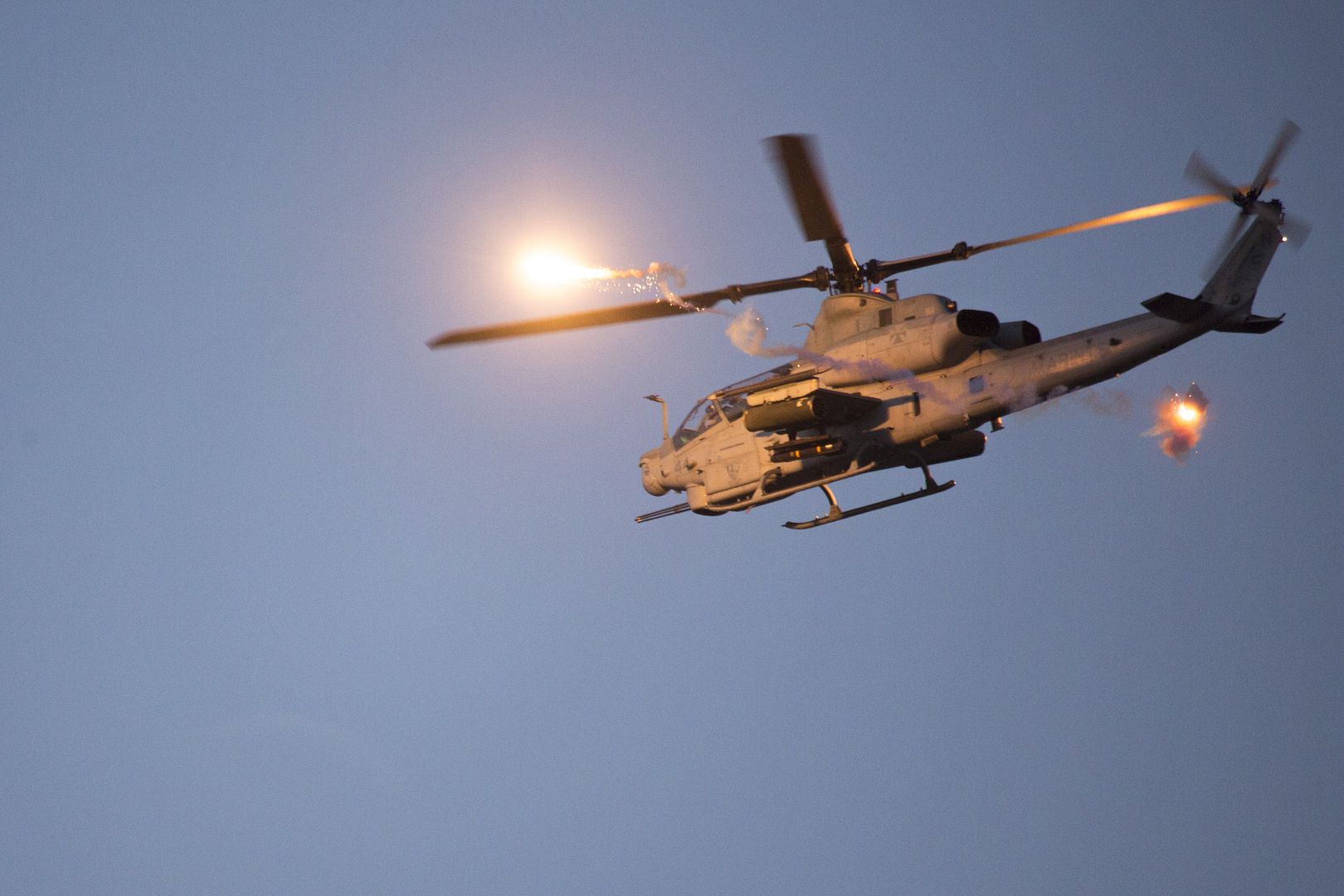
U.S. Marine Corps Lance Cpl. Dwight A. Pence, right, aircraft ordinance technician with Marine Attack Squadron (HMA) 214 and Cpl. Anastasia G. Garcia, ordnance mechanic with HMA 214 conduct preflight arming on a AV-8B Harrier assigned to Marine Aviation Weapons and Tactics Squadron One (MAWTS-1) during an forward arming and refueling point exercise while supporting Weapons and Tactics Instructor (2-17) Course 2-7 in Yuma Proving Grounds, Ariz., April 11, 2017. WTI is a seven-week training event hosted by MAWTS-1 cadre, which emphasizes operational integration of the six functions of Marine Corps aviation in support of a Marine Air Ground Task Force and provides standardized advanced tactical training and certification of unit instructor qualifications to support Marine Aviation Training and Readiness and assists in developing and employing aviation weapons and tactics. (U.S. Marine Corps photo by Cpl. Justin M. Smith)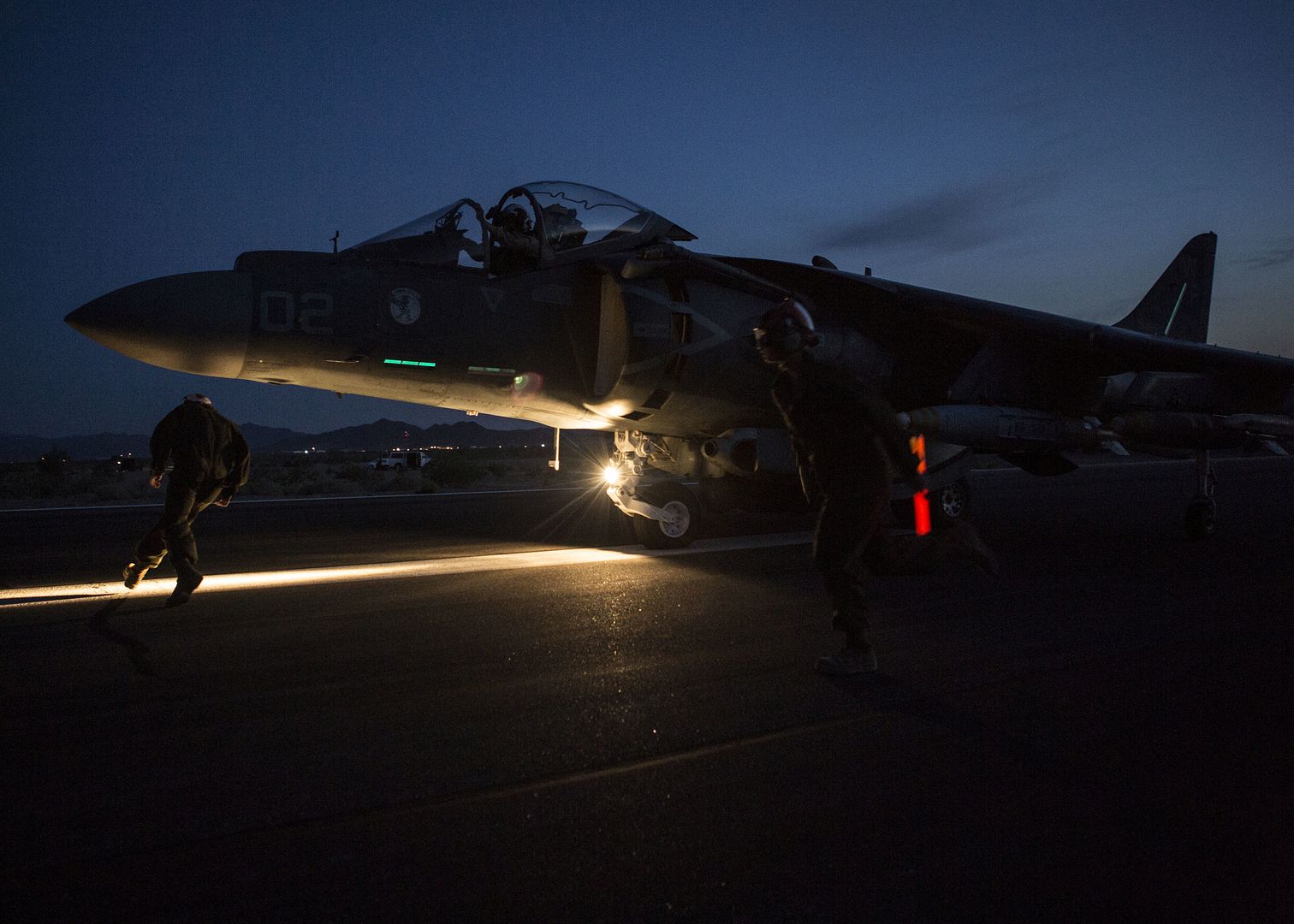
FORT WORTH, Texas, April 12, 2017 /PRNewswire/ -- The U.S. Air Force authorized extending the service life of the Lockheed Martin (NYSE: LMT) F-16's designed service life to 12,000 Equivalent Flight Hours ? far beyond the aircraft's original design service life of 8,000 hours.
Following F-16 Service Life Extension Program (SLEP) structural modifications, the U.S. Air Force could safely operate Block 40-52 aircraft to 2048 and beyond. The Air Force and Lockheed Martin also reduced projected service life costs for the Block 40-52 fleet, paving the way for safe, cost-effective F-16 flight operations decades into the future.
"This accomplishment is the result of more than seven years of test, development, design, analysis and partnership between the U.S. Air Force and Lockheed Martin," said Susan Ouzts, vice president of Lockheed Martin's F-16 program. "Combined with F-16 avionics modernization programs like the F-16V, SLEP modifications demonstrate that the Fighting Falcon remains a highly capable and affordable 4th Generation option for the U.S. Air Force and international F-16 customers."
Validation of the extended flight hour limit directly supports the SLEP goal of extending the service life of up to 300 F-16C/D Block 40-52 aircraft. SLEP and related avionics upgrades to the Air Force's F-16C/D fleet can safely and effectively augment the current fighter force structure as U.S. and allied combat air fleets recapitalize with F-35 Lightning IIs.
A second phase, or Part II, of the F-16 SLEP airworthiness process continues with the request for Military Type Certificate (MTC), which will be submitted to the Air Force's Technical Airworthiness Authority in the coming months. Part II seeks to validate further extending the F-16's operational life based on final service life analysis from extended durability testing.
About the F-16 Fighting Falcon
The F-16 continues to prove itself as the world's most successful, combat-proven multi-role fighter aircraft, having served with 28 customers around the world. The F-16V, the latest F-16 avionics upgrade configuration, includes numerous enhancements designed to keep the F-16 at the forefront of international security. The F-16 Block 70/72, the newest and most advanced F-16 production configuration, combines capability and structural upgrades into the most advanced F-16 production aircraft ever offered.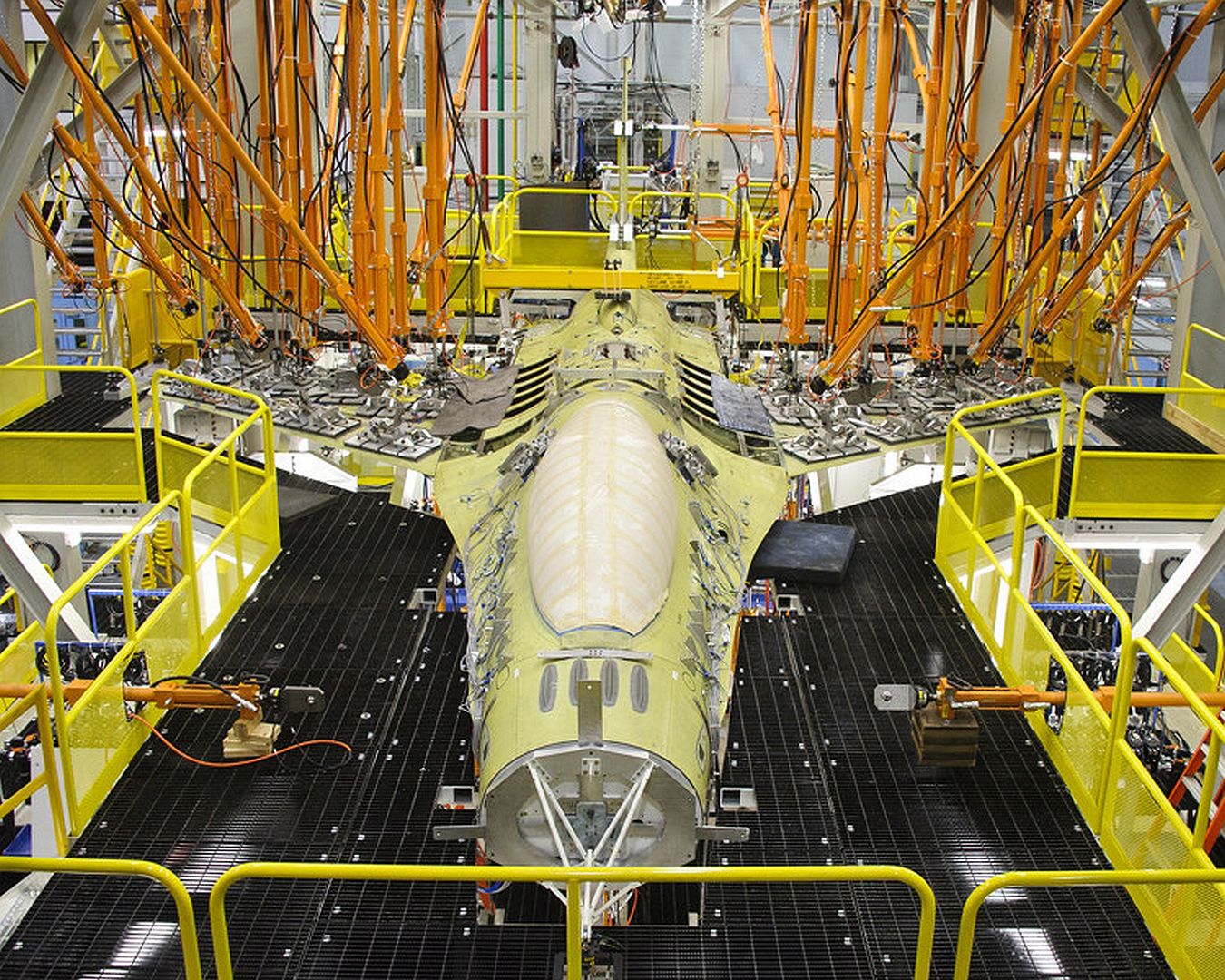
-
 Main AdminPACIFIC OCEAN (April 12, 2017) An MH-60S Sea Hawk assigned to the ?Wildcards? of the Helicopter Attack Squadron (HSC) 23 taks off from the flight deck of amphibious assault ship USS America (LHA 6) during flight operations. America is currently underway with more than 1,000 Sailors and 1,600 embarked Marines conducting Amphibious Squadron/Marine Expeditionary Unit Integration operations in preparation for the ship's maiden deployment later this year. (U.S. Navy photo by Mass Communication Specialist 2nd Class Ramon Go/Released)
Main AdminPACIFIC OCEAN (April 12, 2017) An MH-60S Sea Hawk assigned to the ?Wildcards? of the Helicopter Attack Squadron (HSC) 23 taks off from the flight deck of amphibious assault ship USS America (LHA 6) during flight operations. America is currently underway with more than 1,000 Sailors and 1,600 embarked Marines conducting Amphibious Squadron/Marine Expeditionary Unit Integration operations in preparation for the ship's maiden deployment later this year. (U.S. Navy photo by Mass Communication Specialist 2nd Class Ramon Go/Released)
NAVAL SUPPORT FACILITY DEVESELU, Romania (April 11, 2017) Three IAR-330 Puma medium transport helipcopters take off from Naval Support Facility Deveselu carrying Commander, U.S. Air Forces in Europe and U.S. Air Forces in Africa, Commander, Allied Air Command, and Director, Joint Air Power Competency Centre, Kalkar, Germany Gen. Tod D. Wolters, Lt. Gen. Laurian Anastasof, Chief of Romanian Air Force, Brig. Gen. Dieter E. Bareihs, U.S. Air Force Director of Plans, and staff. NSF Deveselu plays a key role in ballistic missile defense in Eastern Europe. The installation's operations enable the responsiveness of U.S. and allied forces in support of Europe, Africa, Southwest Asia's (EURAFSWA) mission is to provide services to the Fleet, Fighter, and Family. (U.S. Navy photo by Chief Mass Communication Specialist Karen E. Rybarczyk/Released)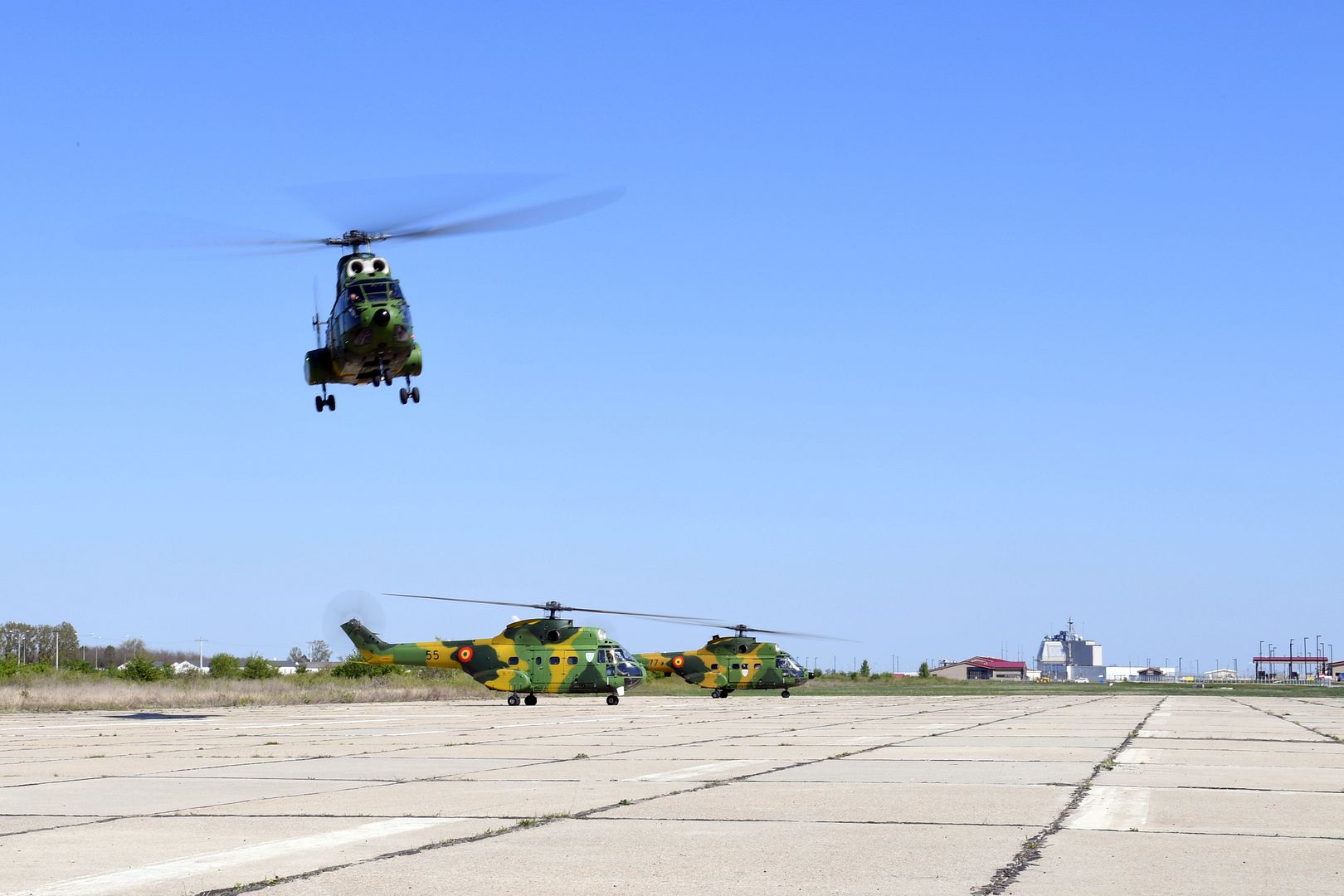
MISAWA, Japan (April 14, 2017) Members from the Navy, Air Force, and civilian sectors came together to trial run a P-3 Orion aircraft through a recently installed "bird wash" at Misawa Airbase. (U.S. Navy Photo by Mass Communication Specialist 2nd Class Samuel Weldin/Released)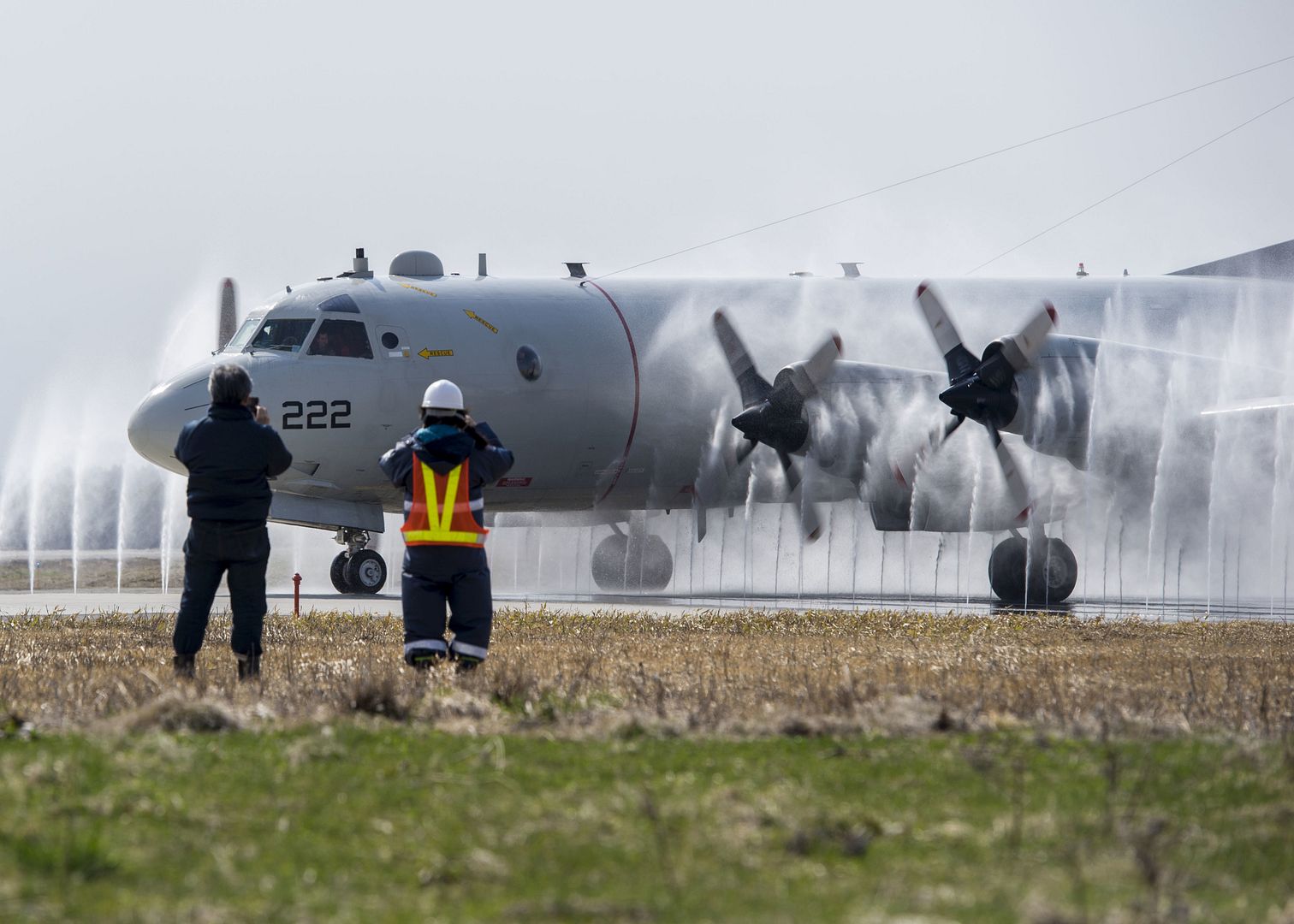
KIRTLAND AIR FORCE BASE, N.M. -- An Air Force F-16 aircraft released an inert B61 nuclear bomb in a test recently, demonstrating the aircraft's capability to deliver the weapon and testing the functioning of the weapon's non-nuclear components, including the arming and fire control system, radar altimeter, spin rocket motors and weapons control computer.
The F-16 from the 422nd Test and Evaluation Squadron at Nellis AFB, Nevada, released the weapon over the Nellis Test and Training Range Complex in the first test use of the upgraded B61, known as the B61-12, with the F-16 aircraft.
The test was conducted under a life-extension program for the B61, which is refurbishing both its nuclear and non-nuclear components to extend the bomb?s service life, while improving its safety, security and reliability. When completed, the new B61-12 version will replace four versions of the B61 bomb currently in the U.S. nuclear stockpile, streamlining production and logistics.
The B61-12 life-extension program is managed by the Air Force Nuclear Weapons Center in conjunction with the Department of Energy?s National Nuclear Security Administration.
?The B61-12 gravity bomb ensures the current capability for the air-delivered leg of the U.S. strategic nuclear triad well into the future for both bombers and dual-capable aircraft supporting NATO,? said Paul Waugh, AFNWC?s Air-Delivered Capabilities director. The B61-12 will be compatible with the B-2A, B-21, F-15E, F-16C/D, F-16 MLU, F-35 and PA-200 aircraft.
The non-nuclear bomb assembly used for the flight test was designed and manufactured by Sandia National Laboratories and Los Alamos National Laboratory as federally funded research and development centers operating under NNSA. The tail-kit assembly mated to the NNSA front-end was designed by the Boeing Company under an AFNWC contract.
About 200 personnel in AFNWC?s Air-Delivered Capabilities Directorate deliver, sustain and support air-delivered nuclear weapon systems. The directorate is headquartered at Kirtland AFB and oversees locations at Eglin AFB, Florida; Joint Base San Antonio, Texas; Ramstein AB, Germany; Robins AFB, Georgia; Tinker AFB, Oklahoma; and Wright-Patterson AFB, Ohio.
The center is responsible for synchronizing all aspects of nuclear material management on behalf of Air Force Materiel Command in direct support of Air Force Global Strike Command. Headquartered at Kirtland AFB, the center has about 1,900 personnel at 17 locations worldwide.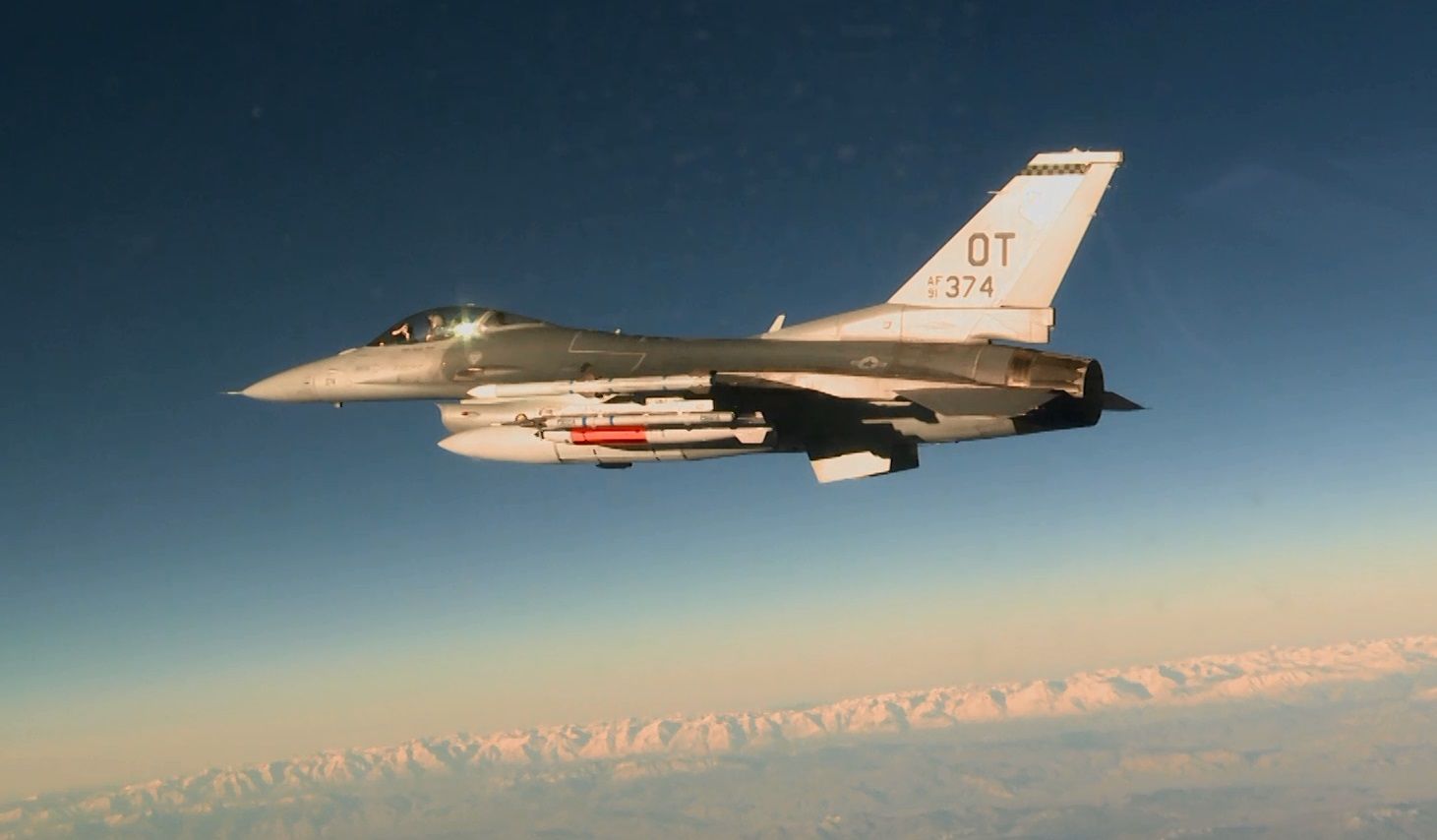
PACIFIC OCEAN ?April 11, 2017 ?Northrop Grumman Corporation?s (NYSE: NOC) autonomous helicopter, MQ-8C Fire Scout, took to the air for the first time from a U.S. Navy independence-class Littoral Combat ship, USS Montgomery (LCS-8). The flight took place off the coast of California during the second phase of Dynamic Interface testing, once again demonstrating Fire Scout?s stability and safety while operating around the ship.
The two week at-sea event allowed the U.S. Navy to test the MQ-8C Fire Scout?s airworthiness and ability to land and take off from a littoral combat ship throughout a broad operational envelope. The MQ-8C Fire Scout conducted its initial at-sea flight test aboard the guided missile destroyer, USS Jason Dunham (DDG-108) in December 2015.
"Fire Scout?s successful testing aboard USS Montgomery and USS Dunham proves its capability to fly from multiple air capable ships," said Capt. Jeff Dodge, program manager, Fire Scout, Naval Air Systems Command. "We plan to have the MQ-8C Fire Scout deployed aboard multiple ships in the near future giving the fleet the persistent intelligence, surveillance, reconnaissance and targeting asset they need.?
With the completion of Dynamic Interface testing, the MQ-8C Fire Scout is one step closer to Initial Operational Test and Evaluation (IOT&E) and full operational deployment.
?Fire Scout?s autonomous technology coupled with the range and endurance of the MQ-8C airframe is truly a game-changer,? said Leslie Smith, vice president, tactical autonomous systems, Northrop Grumman Aerospace Systems. ?When the MQ-8C deploys with its advanced AESA maritime radar, the U.S. Navy will have unmatched situational awareness and the ability to provide sea control in any contested maritime environment.?
The MQ-8C Fire Scout builds on the ongoing accomplishments of the MQ-8B Fire Scout program. Helicopter Squadron 23 is currently operating onboard the deployed littoral combat ship, USS Coronado (LCS 4), with two MQ-8B Fire Scouts in the South China Sea.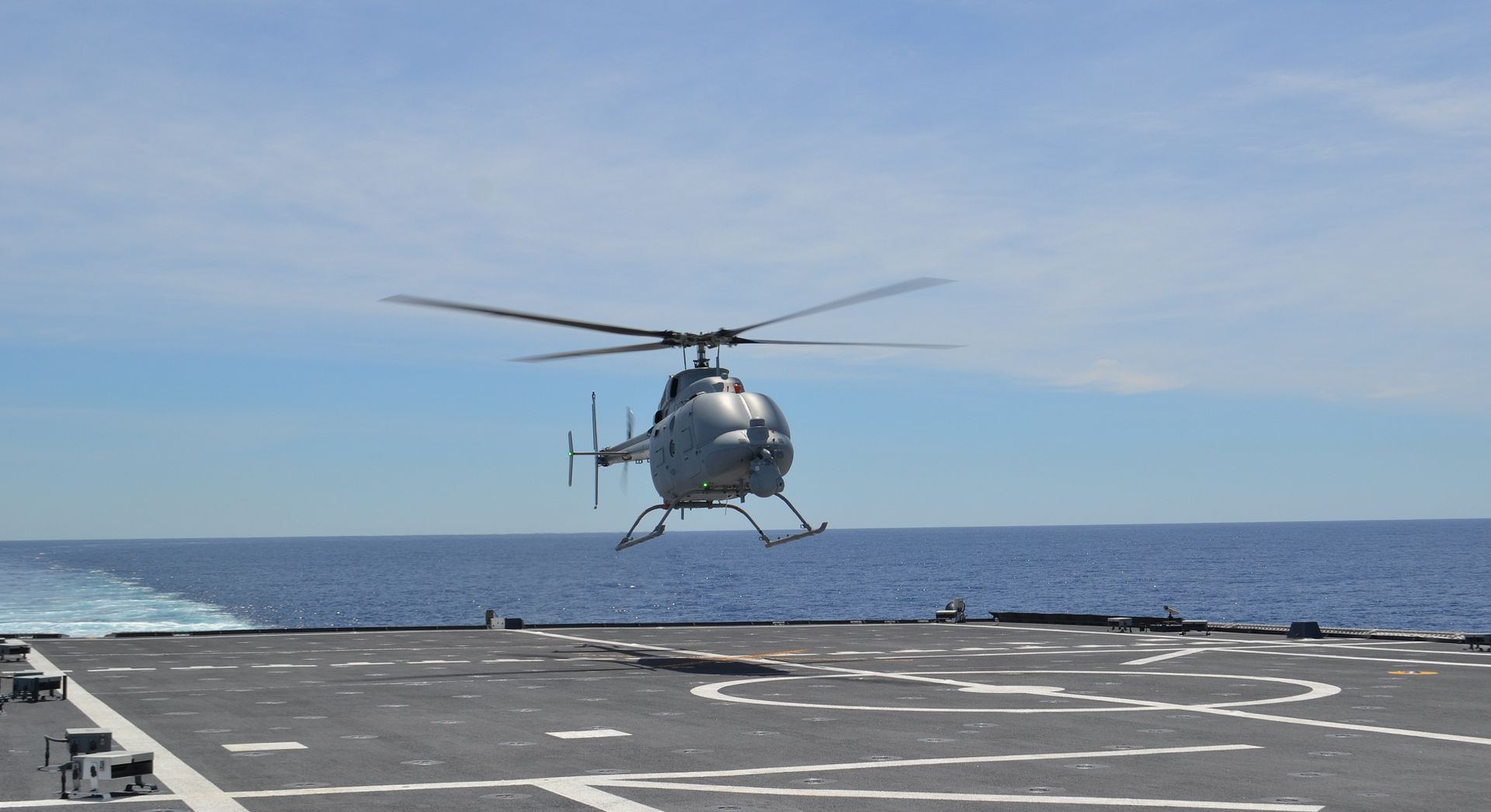
SEATTLE, April 13, 2017 /PRNewswire/ -- The Boeing [NYSE: BA] 737 MAX 9 completed its first flight today in the skies above Puget Sound. The 737 MAX program achieved the milestone on schedule, beginning a comprehensive flight-test program leading to certification and delivery.
"The MAX 9's first flight is another milestone that continues the program's strong track record of progress," said Boeing Commercial Airplanes President & CEO Kevin McAllister. "The MAX family of airplanes offers more value than any competitor and its strong market acceptance is reflected in over 3,700 airplanes on order from 86 customers around the world."
The airplane completed a successful 2 hour, 42-minute flight, taking off from Renton Field in Renton, Wash., at 10:52 a.m. local time and landing at 1:34 p.m. at Seattle's Boeing Field.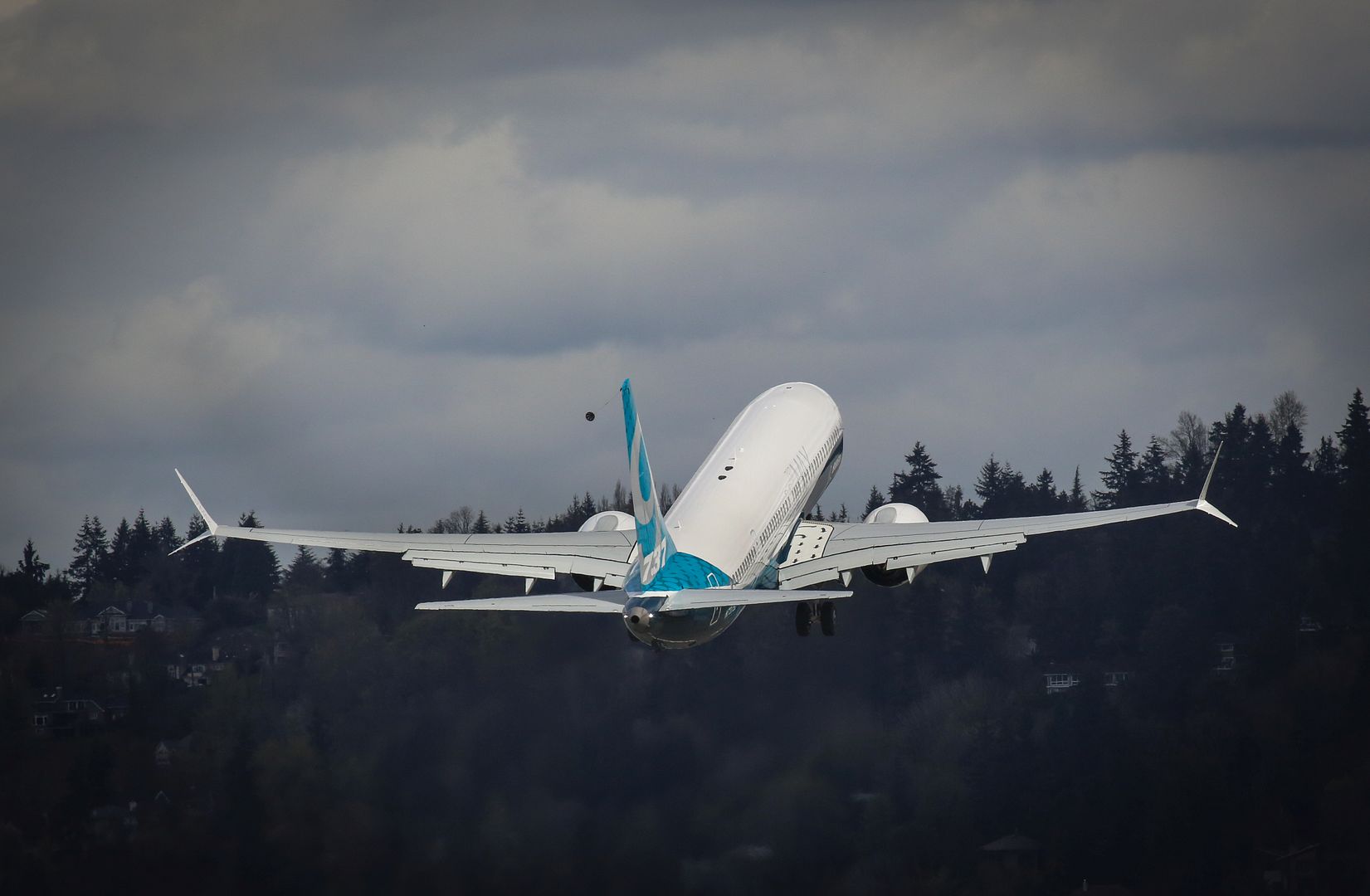
Piloted by Boeing Test & Evaluation Capts. Christine Walsh and Ed Wilson, the airplane performed tests on flight controls, systems and handling qualities. The MAX 9 will now undergo comprehensive flight testing before customer deliveries begin in 2018.
The 737 MAX 9 is the second member of Boeing's industry leading 737 MAX family, with a maximum capacity of 220 passengers and a range of 3,515 nautical miles.
"The 737 MAX team continues to fire on all cylinders," said Keith Leverkuhn, vice president and general manager, 737 MAX program, Boeing Commercial Airplanes. "Each new milestone we meet builds knowledge and experience that gets leveraged to keep the program moving forward on track."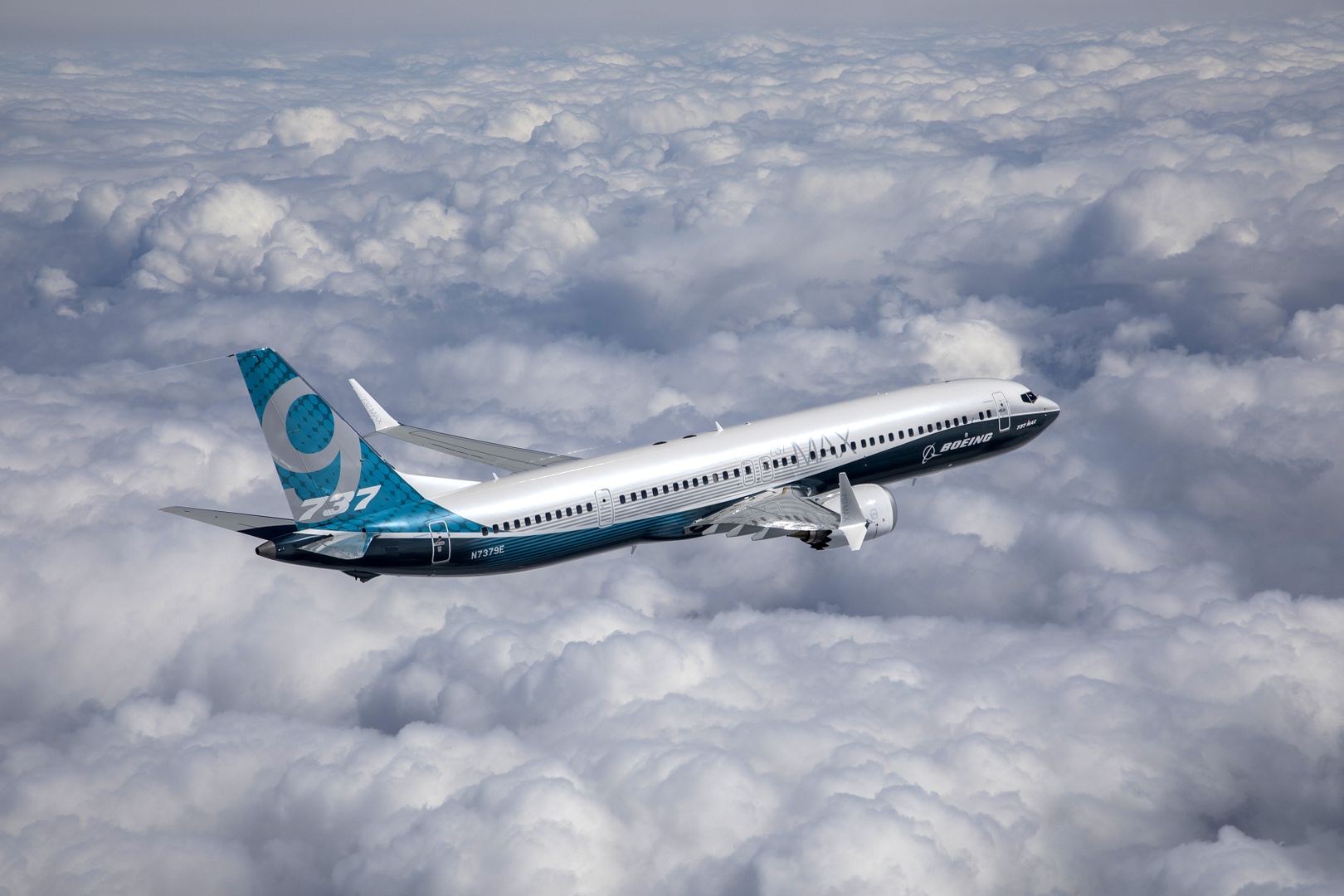
The 737 MAX family has been designed to offer customers exceptional performance, flexibility and efficiency, with lower per-seat costs and an extended range that will open up new destinations in the single-aisle market. The MAX 8 and 9 will be followed in 2019 by the smaller MAX 7 and higher capacity MAX 200, while studies and customer discussions continue on further growing the family.
The 737 MAX incorporates the latest technology CFM International LEAP-1B engines, Advanced Technology winglets and other improvements to deliver the highest efficiency, reliability and passenger comfort in the single-aisle market.
The 737 MAX is the fastest-selling airplane in Boeing history, accumulating more than 3,700 orders to date from 86 customers worldwide.
-
 Main AdminAn F-35A Lightning II from the 34th Fighter Squadron at Hill Air Force Base, Utah, lands at Royal Air Force Lakenheath, England, April 15, 2017. The aircraft arrival marks the first F-35A fighter training deployment to the U.S. European Command area of responsibility or any overseas location as a flying training deployment. (U.S. Air Force photo/Master Sgt. Eric Burks)
Main AdminAn F-35A Lightning II from the 34th Fighter Squadron at Hill Air Force Base, Utah, lands at Royal Air Force Lakenheath, England, April 15, 2017. The aircraft arrival marks the first F-35A fighter training deployment to the U.S. European Command area of responsibility or any overseas location as a flying training deployment. (U.S. Air Force photo/Master Sgt. Eric Burks)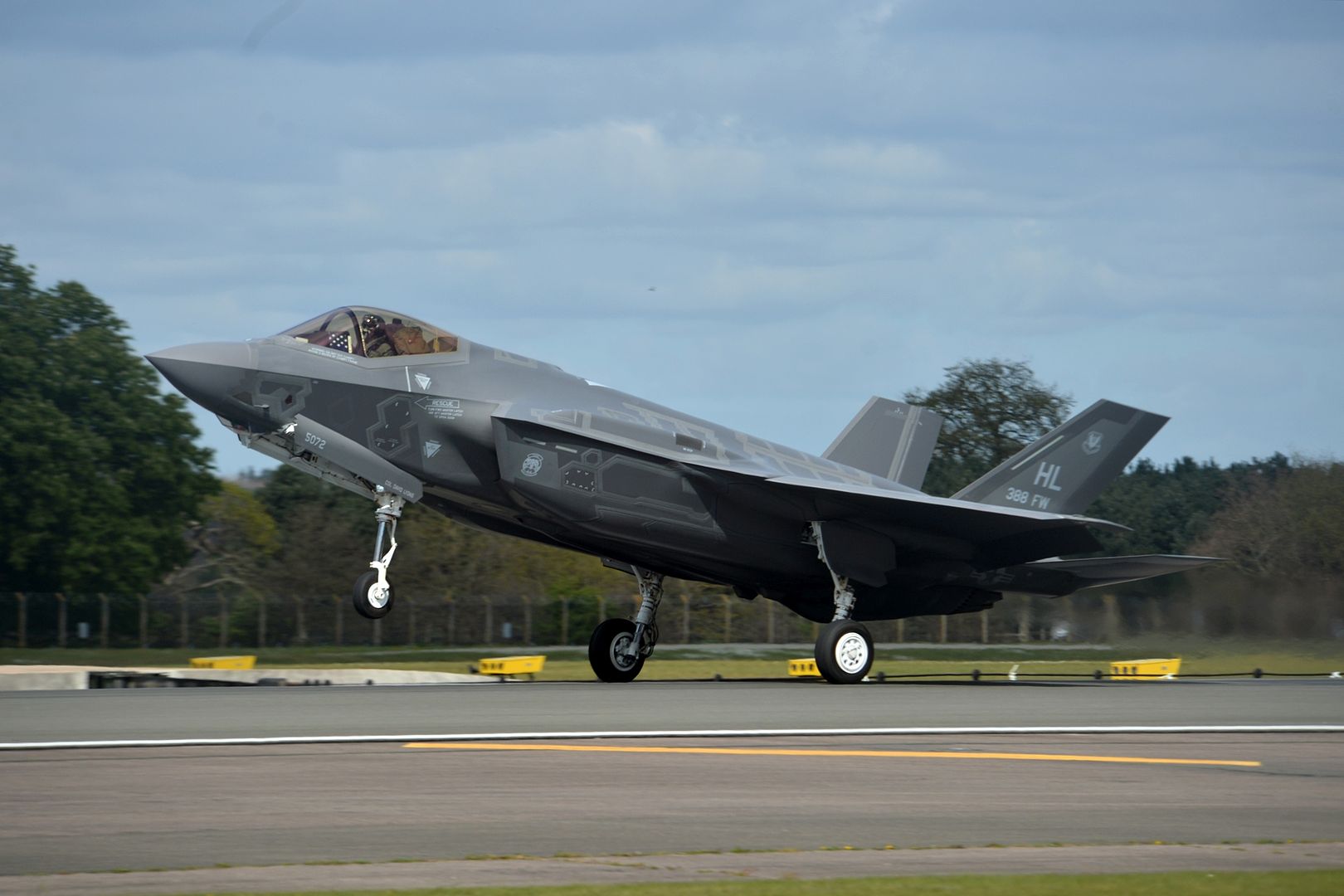
F-35A Lightning II's from the 34th Fighter Squadron at Hill Air Force Base, Utah, land at Royal Air Force Lakenheath, England, April 15, 2017. The aircraft arrival marks the first F-35A fighter training deployment to the U.S. European Command area of responsibility or any overseas location as a flying training deployment. (U.S. Air Force photo/Tech. Sgt. Matthew Plew)
An F-35 Lightning II from the 34th Fighter Squadron at Hill Air Force Base, Utah, taxis in at Royal Air Force Lakenheath, England, April 15, 2017. The aircraft arrival marks the first F-35A fighter training deployment to the U.S. European Command area of responsibility or any overseas location as a flying training deployment. (U.S. Air Force photo/Staff Sgt. Emerson Nu?ez)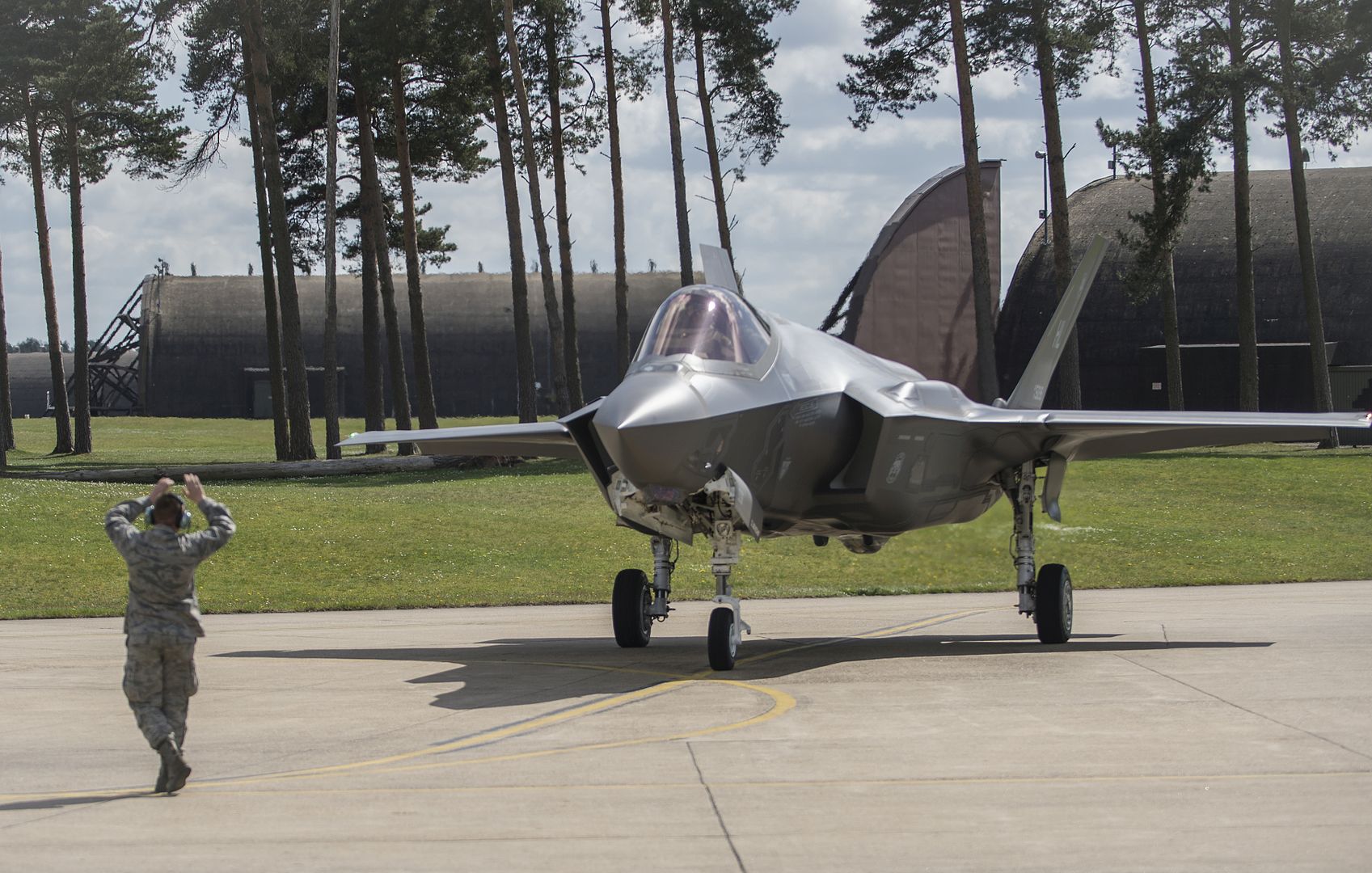
-
 Main AdminAn Ellsworth B-1 with a new piece of nose art with historic ties takes off down a runway at Ellsworth Air Force Base, S.D., April 14, 2017. The Ruptured Duck nose art is the same design from a B-25 Mitchell bomber that was flown during the Doolittle Raid in 1942. (U.S. Air Force photo by Senior Airman James L. Miller)
Main AdminAn Ellsworth B-1 with a new piece of nose art with historic ties takes off down a runway at Ellsworth Air Force Base, S.D., April 14, 2017. The Ruptured Duck nose art is the same design from a B-25 Mitchell bomber that was flown during the Doolittle Raid in 1942. (U.S. Air Force photo by Senior Airman James L. Miller)
-
 Main AdminA Belgian Air Component F-16 Fighting Falcon approaches a U.S. Air Force KC-135 Stratotanker from the 340th Expeditionary Air Refueling Squadron before aerial refueling during a Combined Joint Task Force- Operation Inherent Resolve mission over Iraq, April 11, 2017. The Fighting Falcon provides a relatively low-cost, high-performance weapon system for the U.S. and allied nations. (U.S. Air Force photo by Senior Airman Joshua A. Hoskins)
Main AdminA Belgian Air Component F-16 Fighting Falcon approaches a U.S. Air Force KC-135 Stratotanker from the 340th Expeditionary Air Refueling Squadron before aerial refueling during a Combined Joint Task Force- Operation Inherent Resolve mission over Iraq, April 11, 2017. The Fighting Falcon provides a relatively low-cost, high-performance weapon system for the U.S. and allied nations. (U.S. Air Force photo by Senior Airman Joshua A. Hoskins)
Two U.S. Air Force F-22 fly in formation behind a U.S. Air Force KC-135 Stratotanker from the 340th Expeditionary Air Refueling Squadron during a Combined Joint Task Force- Operation Inherent Resolve mission over Iraq, April 11, 2017. The raptor performs both air-to-air and air-to-ground missions allowing full realization of operational concepts vital to the 21st century Air Force. (U.S. Air Force photo by Senior Airman Joshua A. Hoskins)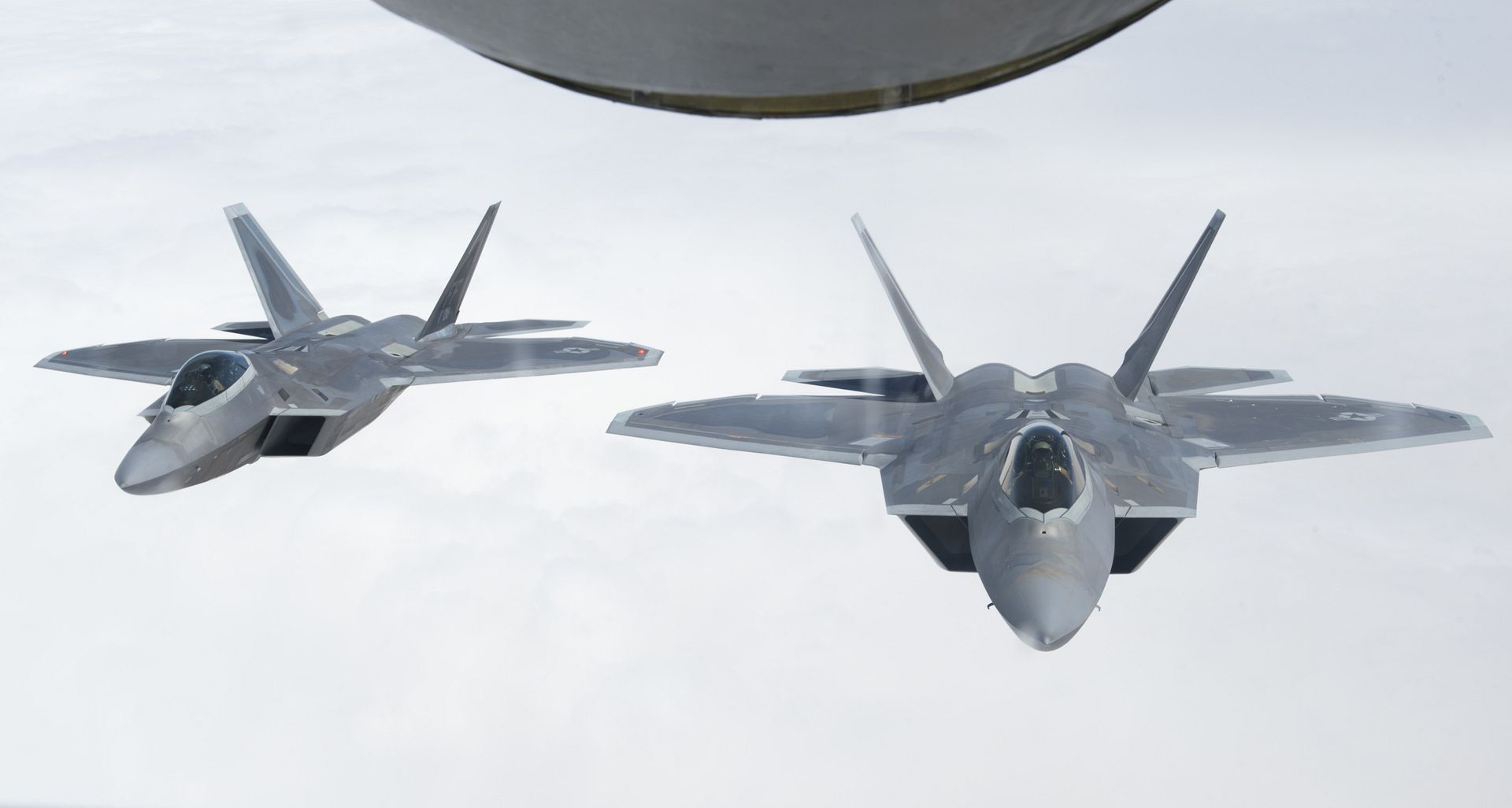
-
 Main AdminSOUTH CHINA SEA (April 15, 2017) A CH-53E Super Stallion, assigned to the Ridge Runners of Marine Medium Tiltrotor Squadron (VMM) 163 (Reinforced), rests on the flight deck of the amphibious assault ship USS Makin Island (LHD
Main AdminSOUTH CHINA SEA (April 15, 2017) A CH-53E Super Stallion, assigned to the Ridge Runners of Marine Medium Tiltrotor Squadron (VMM) 163 (Reinforced), rests on the flight deck of the amphibious assault ship USS Makin Island (LHD during an aircraft wash-down. Makin Island, the flagship for the Makin Island Amphibious Ready Group, with the embarked 11th Marine Expeditionary Unit, is operating in the Indo-Asia-Pacific region to enhance amphibious capability with regional partners and to serve as a ready-response force for any type of contingency. (U.S. Navy photo by Mass Communication Specialist 3rd Class Devin M. Langer)
during an aircraft wash-down. Makin Island, the flagship for the Makin Island Amphibious Ready Group, with the embarked 11th Marine Expeditionary Unit, is operating in the Indo-Asia-Pacific region to enhance amphibious capability with regional partners and to serve as a ready-response force for any type of contingency. (U.S. Navy photo by Mass Communication Specialist 3rd Class Devin M. Langer) 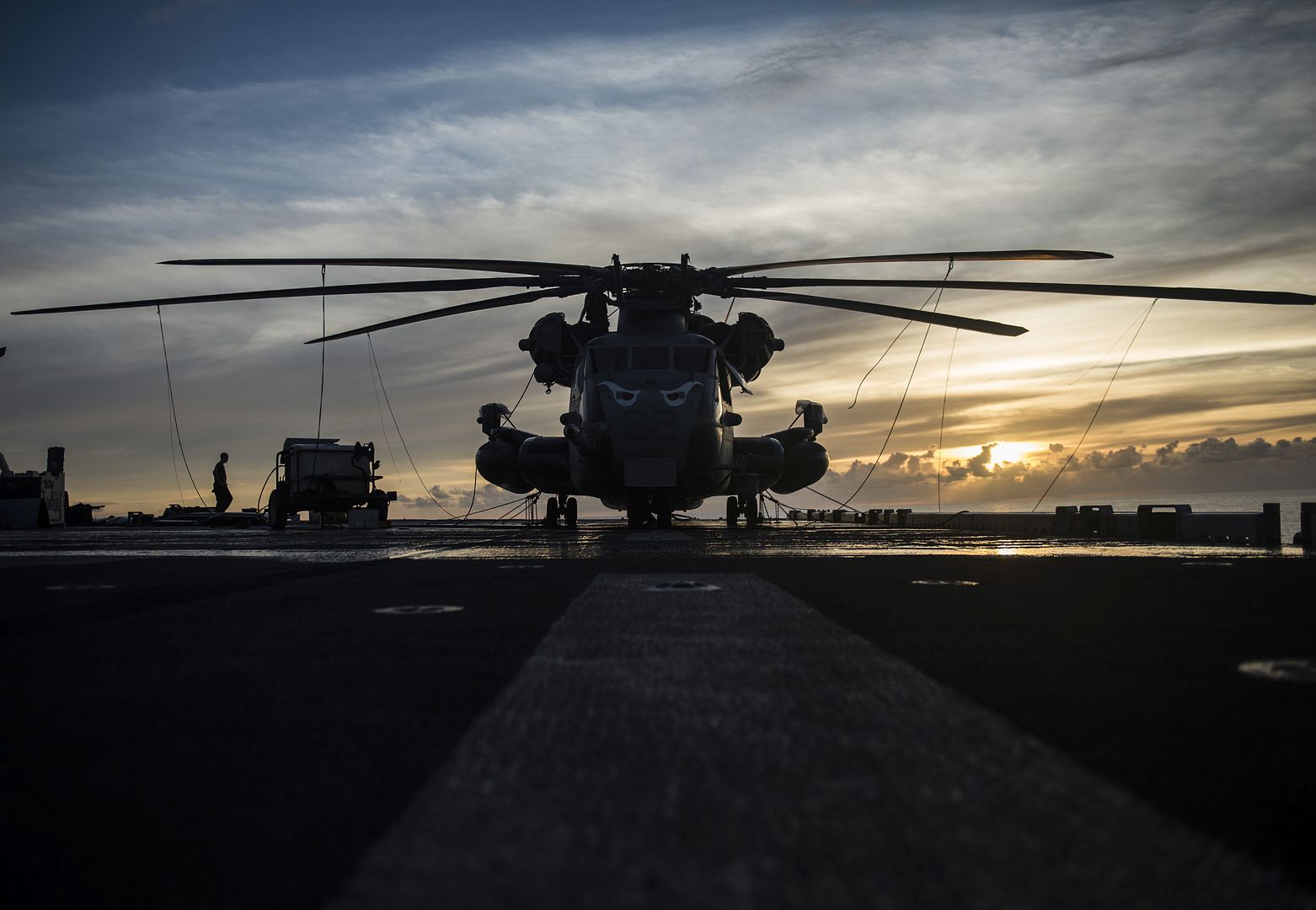
The B-25 Mitchell bomber Miss Mitchell lands on a runway next to the National Museum of the U.S. Air Force at Wright-Patterson Air Force Base, Ohio, April 17, 2017. The Miss Mitchell is one of the 11 World War II bombers taking part in the museum?s celebration of the 75th anniversary of the Doolittle Raid when Army Air Corps bombers took off from an aircraft carrier to deliver the first strike of the war on the Japanese homeland. (U.S. Air Force photo by R.J. Oriez/Released)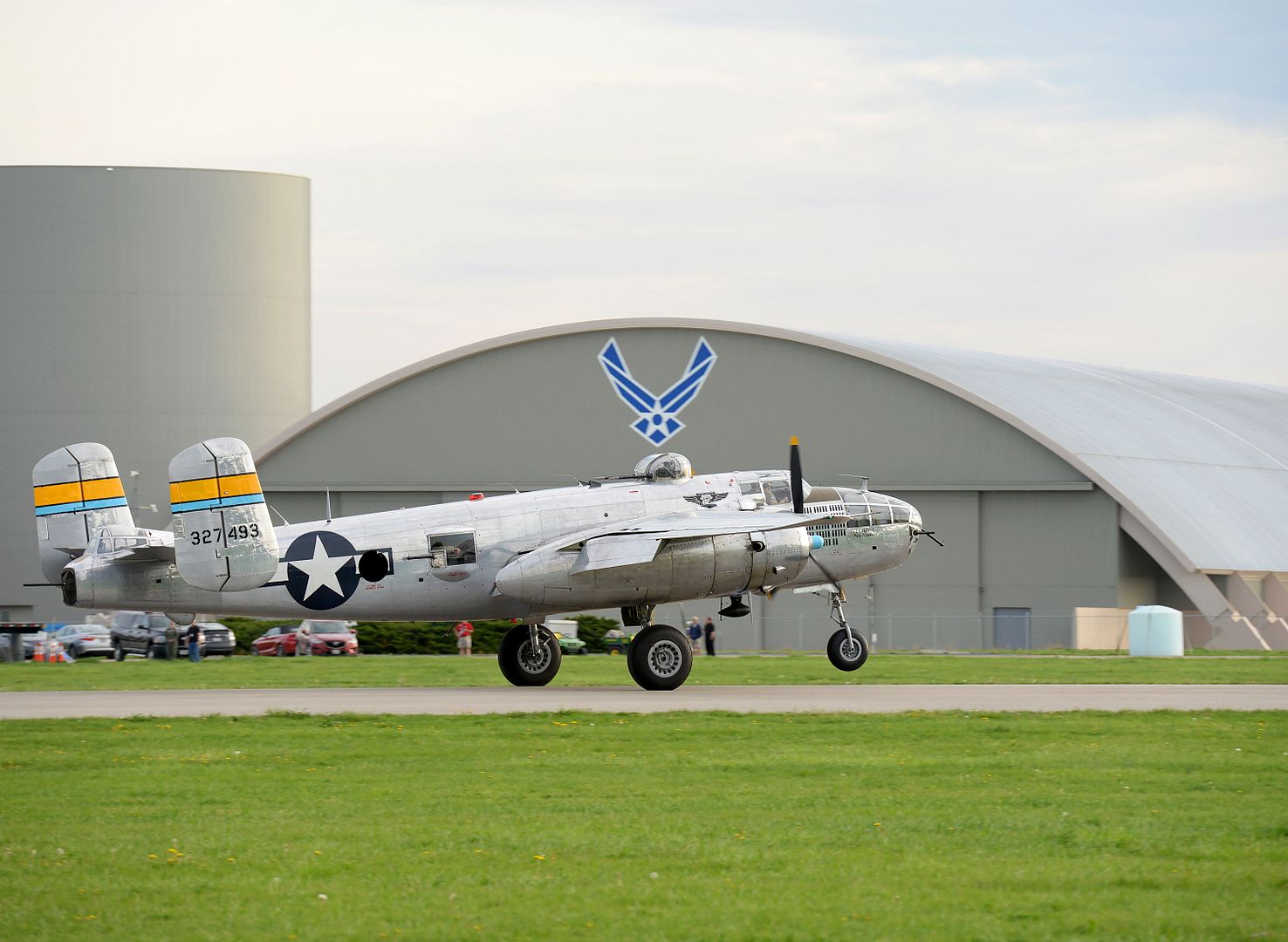
The B-25 Mitchell bomber Devil Dog lands on a runway next to the National Museum of the U.S. Air Force at Wright-Patterson Air Force Base, Ohio, April 17, 2017. The Devil Dog, out of Georgetown, Texas, is one of the 11 World War II bombers taking part in the museum?s celebration of the 75th anniversary of the Doolittle Raid when Army Air Corps bombers took off from an aircraft carrier to deliver the first strike of the war on the Japanese homeland. (U.S. Air Force photo by R.J. Oriez/Released)
The B-25 Mitchell bomber Betty?s Dream lands on a runway next to the National Museum of the U.S. Air Force at Wright-Patterson Air Force Base, Ohio, April 17, 2017. The Betty?s Dream, out of Houston, Texas, is one of the 11 World War II bombers taking part in the museum?s celebration of the 75th anniversary of the Doolittle Raid when Army Air Corps bombers took off from an aircraft carrier to deliver the first strike of the war on the Japanese homeland. (U.S. Air Force photo by R.J. Oriez/Released)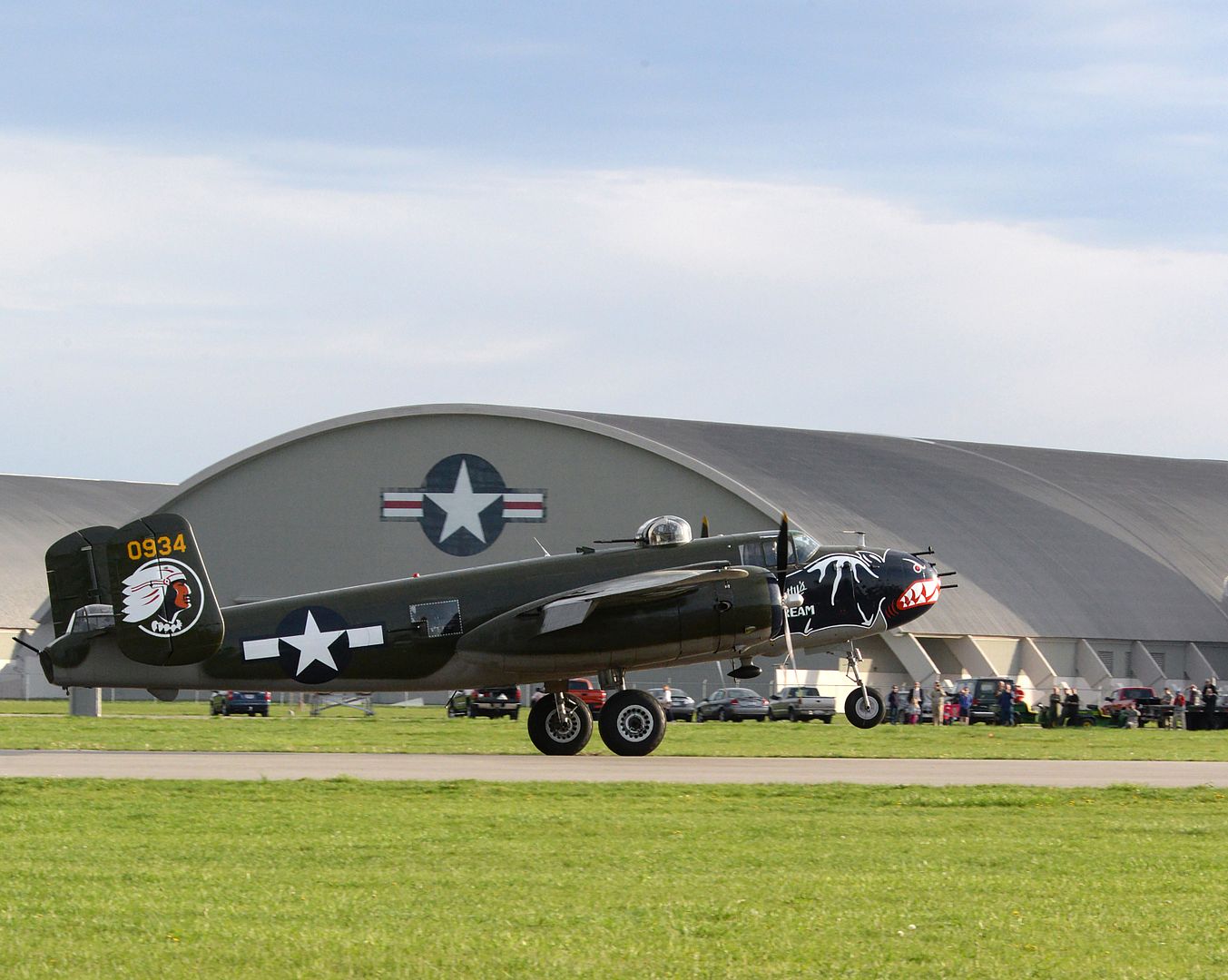
The B-25 Mitchell bomber Panchito lands on a runway next to the National Museum of the United States Air Force at Wright-Patterson Air Force Base, Ohio, April 17, 2017. The Panchito, out of Georgetown, Del., is one of 11 World War II bombers taking part in the museum's celebration of the 75th anniversary of the Doolittle Raid, when Army Air Corps bombers took off from an aircraft carrier to deliver a retaliatory strike on the Japanese homeland during World War II. (U.S. Air Force photo by R.J. Oriez)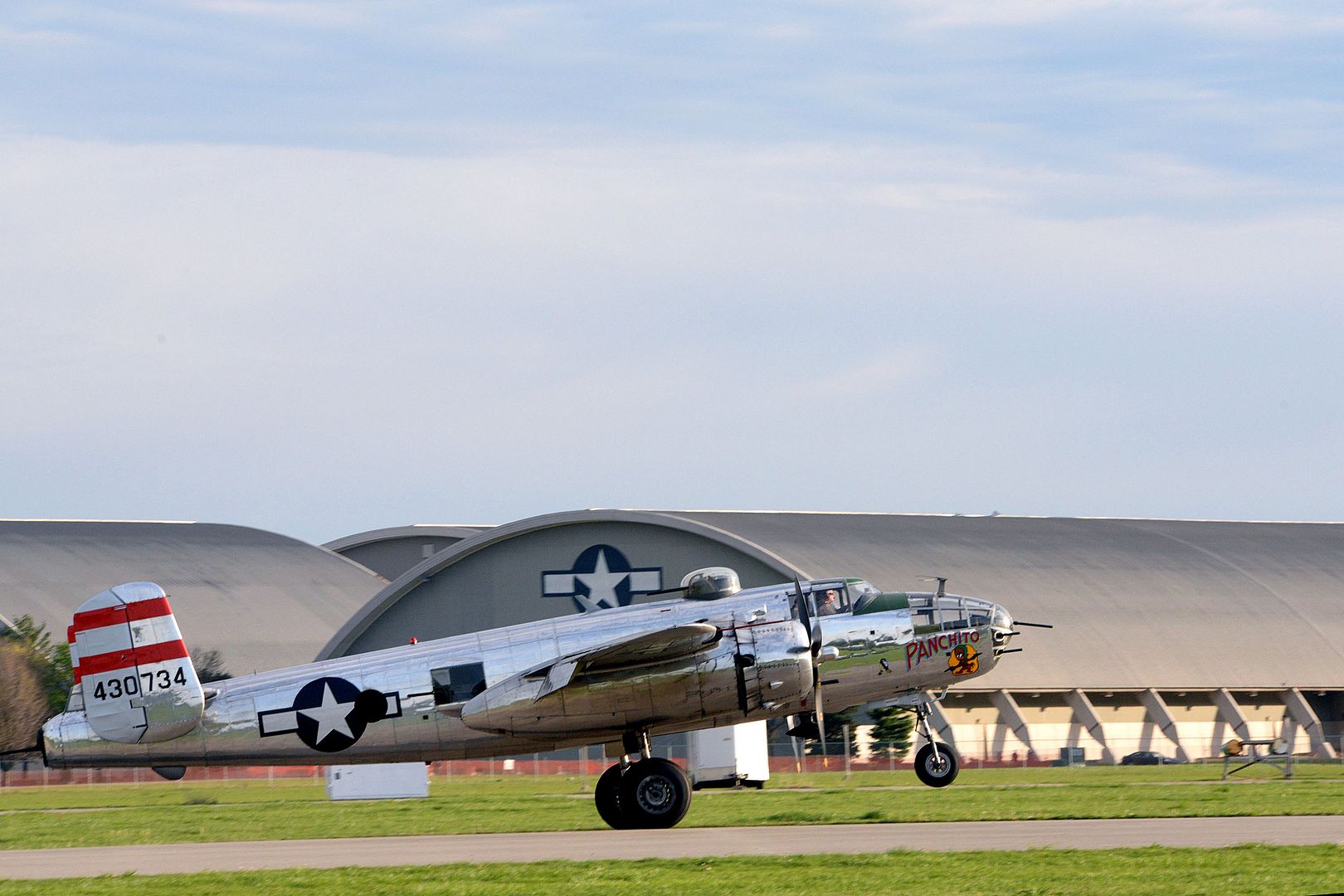
Becky Thatcher, daughter of the late Doolittle Raider Staff Sgt. David Thatcher, and U.S. Air Force Tech. Sgt. William Hatten from 28th Maintenance Squadron from Ellsworth Air Force Base, S.D., Ruptured Duck dedicated crew chief, unveil the newest rendition of the Ruptured Duck artwork during a ceremony for the new Ruptured Duck artwork, Apr. 17, 2017 at Wright-Patterson Air Force Base, Ohio. The original artwork featured a cross-eyed duck, wearing a leather helmet, staring out over crossed crutches. (U.S. Air Force photo by Wesley Farnsworth / Released)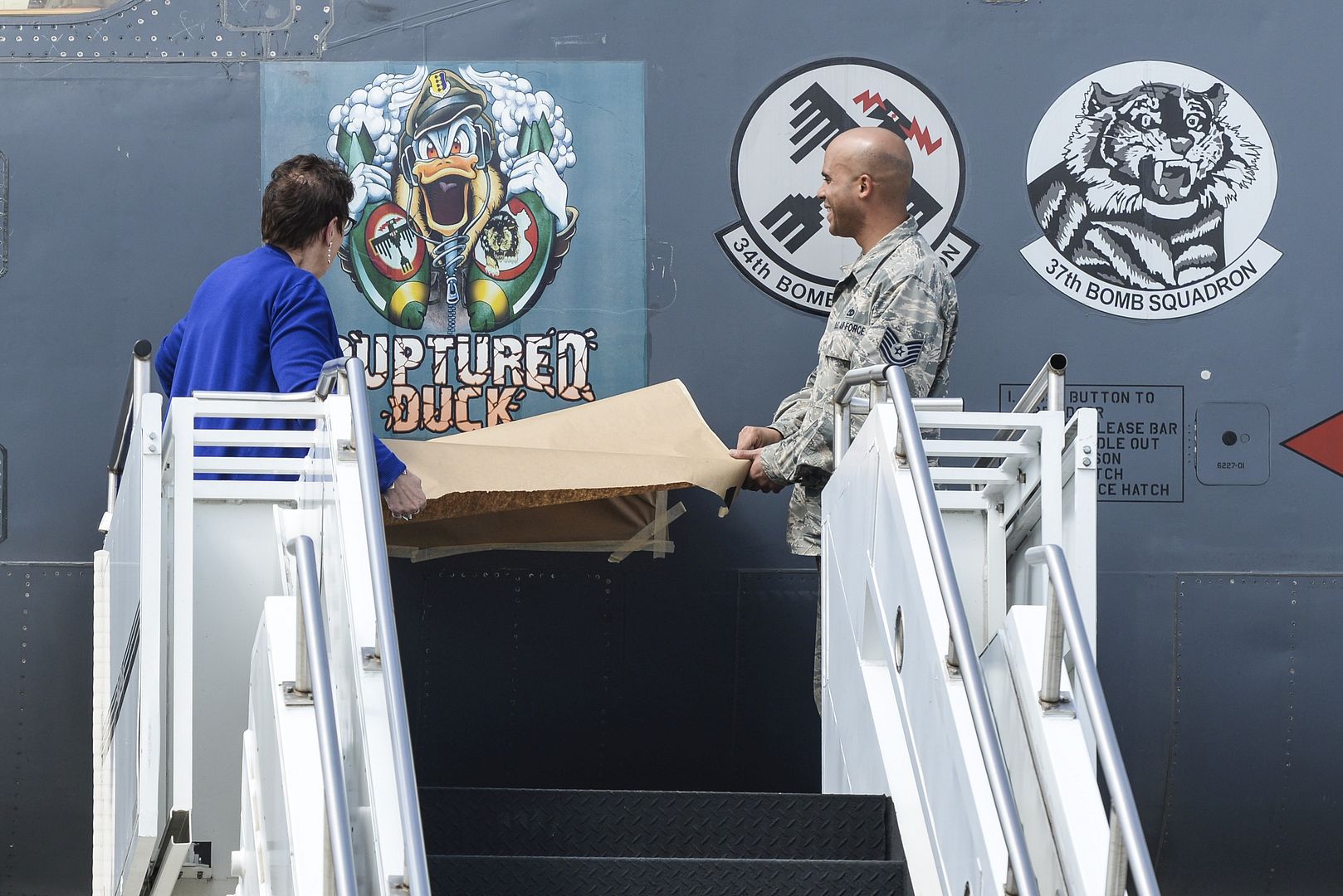
The United States Air Force Thunderbirds and Patrouille de France fly together over Death Valley, Calif., April 17, 2017. The Thunderbirds and Patrouille de France are two of the oldest aerial demonstration teams in the world. (U.S. Air Force Photo's by Tech. Sgt. Christopher Boitz)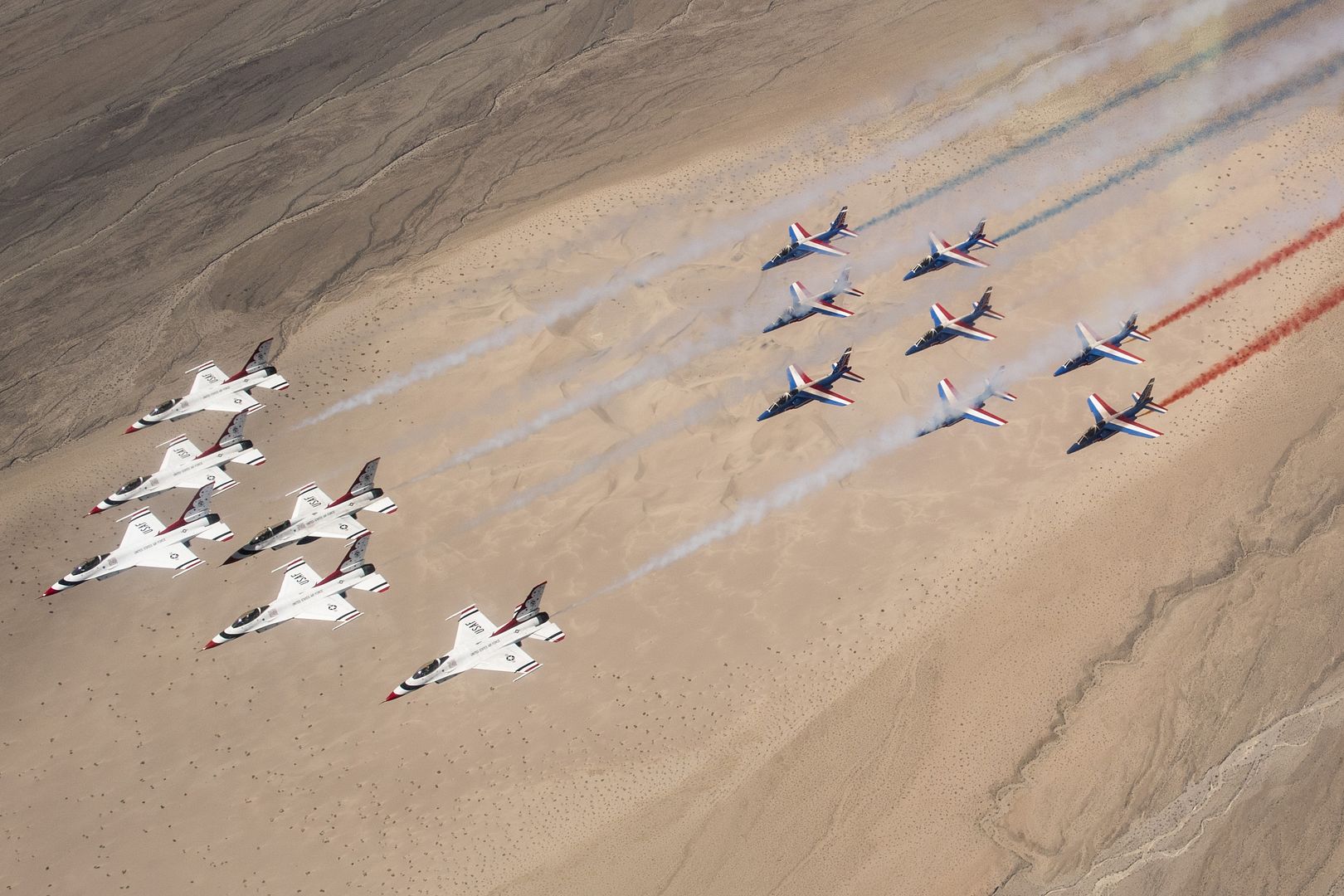

PACIFIC OCEAN (April 15, 2017) An F/A-18F Super Hornet assigned to the Redcocks of Strike Fighter Attack Squadron (VFA) 22 launches off the flight deck of USS Theodore Roosevelt (CVN 71). Theodore Roosevelt is underway conducting a tailored ship?s training availability off the coast of Southern California. (U.S. Navy photo by Mass Communication Specialist Seaman Alex Corona/Released)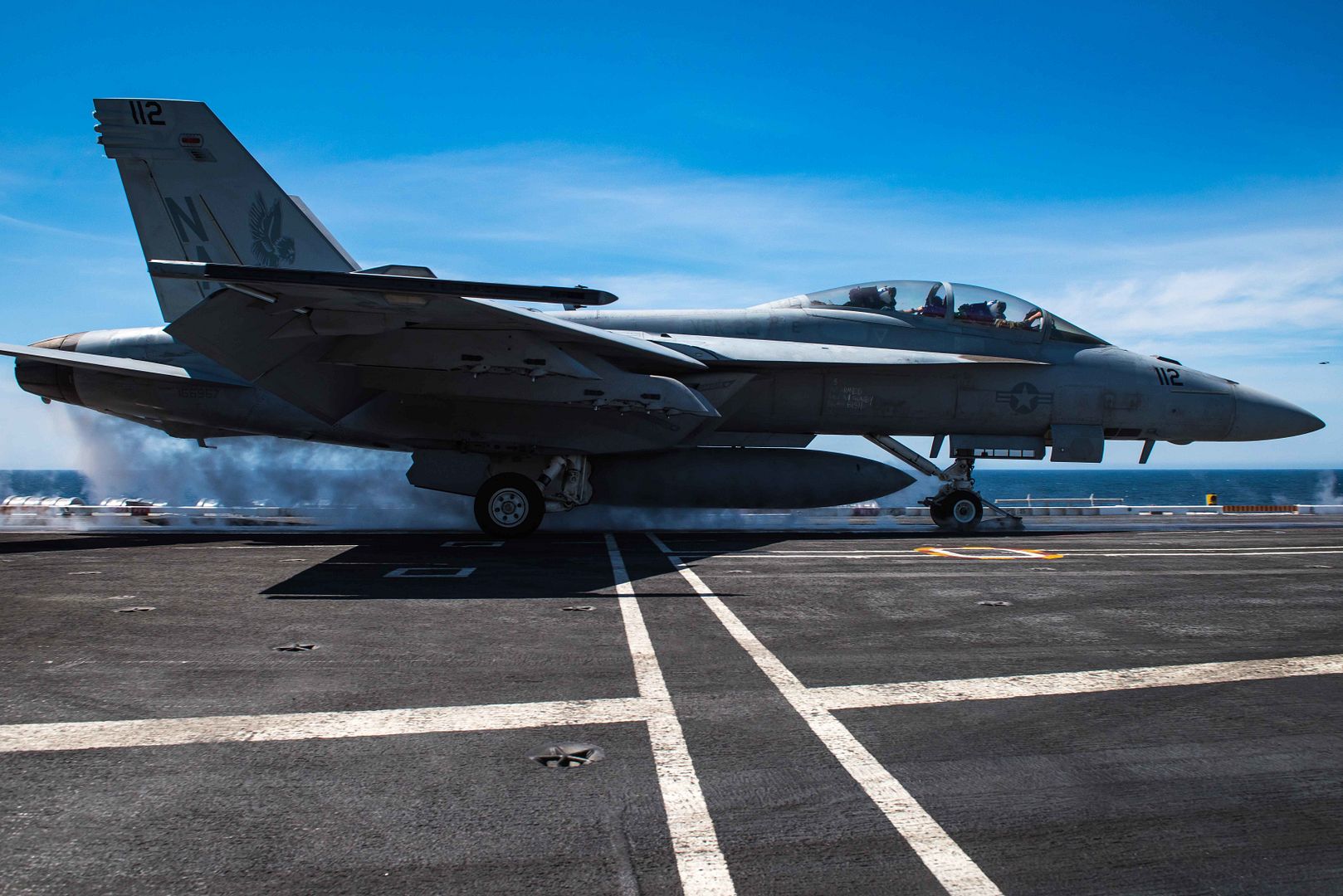
Post a reply
- Go to Next topic
- Go to Welcome
- Go to Introduce Yourself
- Go to General Discussion
- Go to Screenshots, Images and Videos
- Go to Off topic
- Go to Works in Progress
- Go to Skinning Tips / Tutorials
- Go to Skin Requests
- Go to IJAAF Library
- Go to Luftwaffe Library
- Go to RAF Library
- Go to USAAF / USN Library
- Go to Misc Library
- Go to The Ops Room
- Go to Made in Germany
- Go to Campaigns and Missions
- Go to Works in Progress
- Go to Juri's Air-Raid Shelter
- Go to Campaigns and Missions
- Go to Works in Progress
- Go to Skinpacks
- Go to External Projects Discussion
- Go to Books & Resources
